Today’s game provides fleeting opportunities to watch elite golfers play a classic course as the architect intended. Specifically, we have never seen the best in the world take on a Seth Raynor design. This year’s U.S. Women’s Open will pit the top female golfers against a bold set of Raynor’s famed template holes at the Country Club of Charleston.
One of the advantages of the women’s game is it hasn’t overgrown golf’s historic venues. In fact, the women fit them better than ever. Today’s average LPGA professional hits their driver roughly 250 yards, comparable to the distance that Raynor laid out his courses to defend against. This distance of tee shot, along with the flatter, lower-spinning approaches, makes strategy paramount. It reveals a kind of golf filled with options beyond bludgeoning driver. The correct decision isn’t always obvious, so the game becomes more similar to chess than checkers.
The wide fairways and bold green complexes at the Country Club of Charleston will provide a perfect stage to showcase the beauty of the women’s game. A game that promotes a wide range of styles of play. One where precision players are worthy adversaries to power players. Inbee Park, the most dominant female golfer in the last decade, has ranked an average of 66th in driving distance during that time. Running down the top players in the women’s game reveals that there is no prescribed formula for success. This version of the game pushes players to find their personal formula to win.
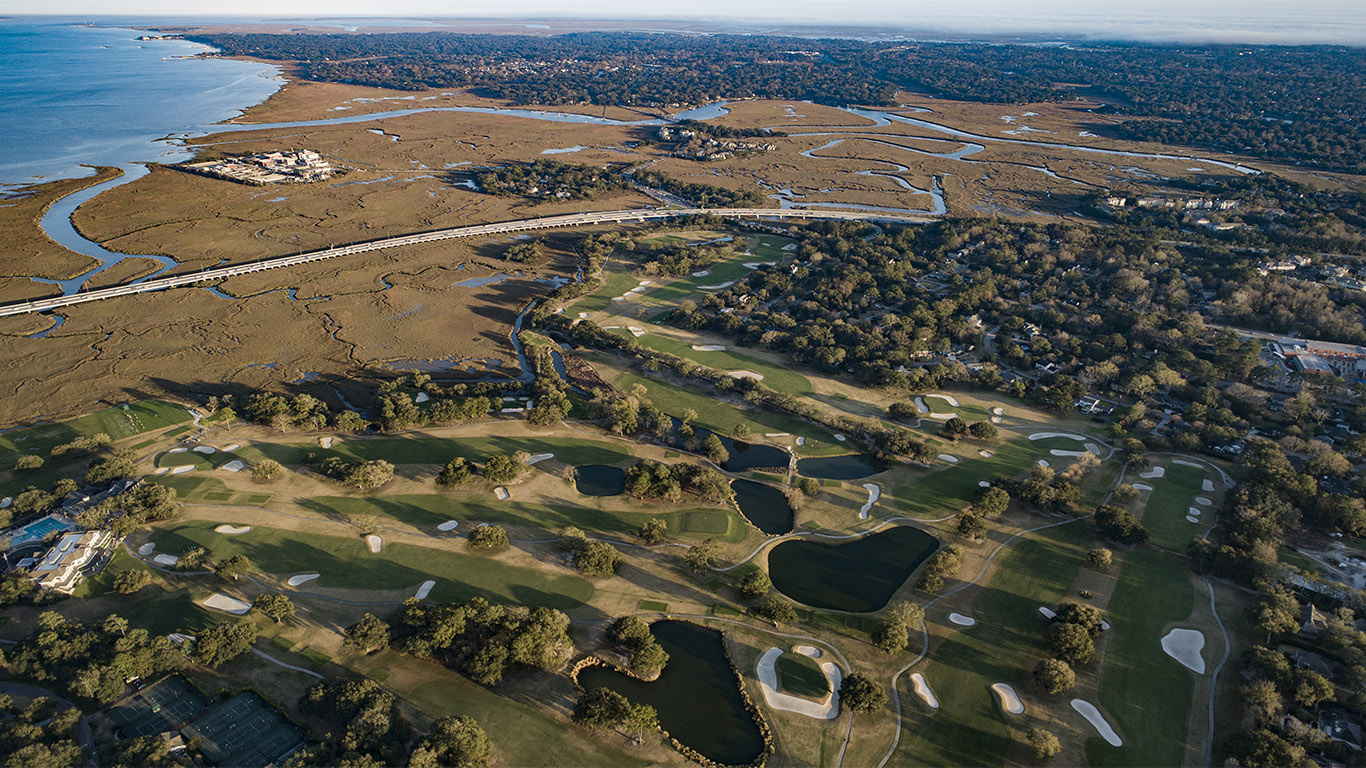
High above the Country Club of Charleston.
The course
The Country Club of Charleston is the ideal canvas for the game’s premier artists to go to work. The 1923 Seth Raynor design doesn’t discriminate against any type of player. Thanks to restoration work from Brian Silva in the mid 2000s and Kyle Franz’ more recent enhancements, Charleston plays nearly identical to its original Raynor design. Bombers will find advantages from carrying treacherous fairway bunkers, while accurate players can use their skills to find the ideal angles to approach the unique Raynor greens. Charleston’s wide corridors allow many different strategies to unfold.
Like most courses in the Charleston area, the Country Club sits on a relatively flat property. It’s the type of site where the genius of an architect, not the property, shines. Few architects designed as many compelling courses on flat land as Seth Raynor. An engineer by training, he was adept at surveying land, finding its best features and maximizing them. Raynor did just that at Charleston, building his ideal holes on a site with a few key points of both visual and topographical interest.
Looking at the topographic map from the 1923 Olmsted Plan, an acute eye is immediately drawn to two distinct areas. One contains the clubhouse, the famed 11th reverse redan and the uphill closer 18th. The other area is home to the core of Charleston’s dramatic back nine. The subtle ridge that houses the 12th, 14th and 16th greens and the 13th, 15th and 17th tees will be the site to where this year’s championship plays out. This stretch has many of Charleston’s iconic holes and will yield roars that competitors will hear from in front and behind.
-
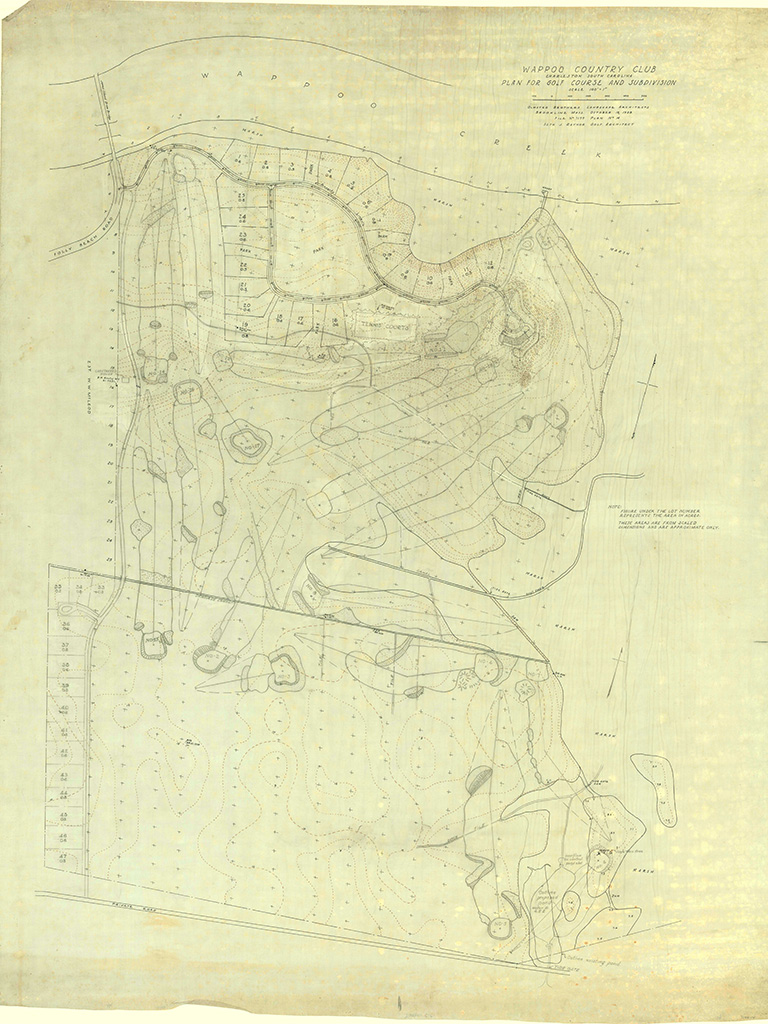
1923 Olmsted drawing of the property reflecting Raynor’s original plans Credit: Olmsted Archives, National Parks Service
-
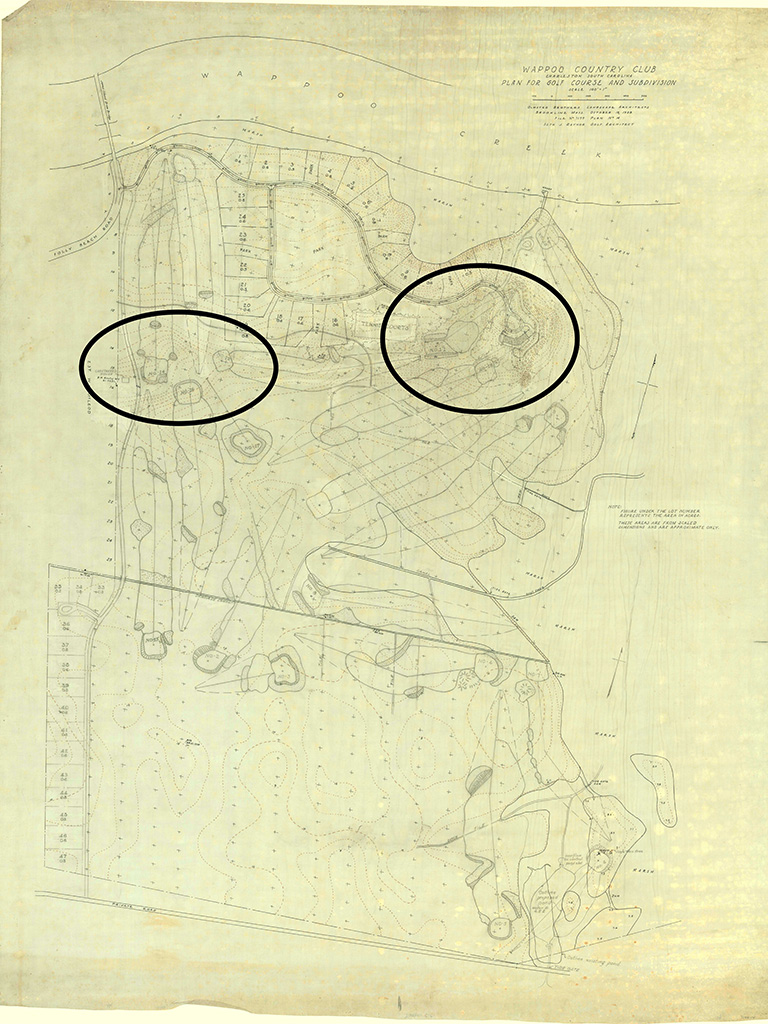
The two areas of most topographical interest on the property circled.
Where he wasn’t working with interesting topography, Raynor routed the course to the most beautiful portion of the property. The front nine inhabits an area along the Ashley River. The masterful routing takes players out along the scenic portions of the land before returning and using the features best for golf.
-
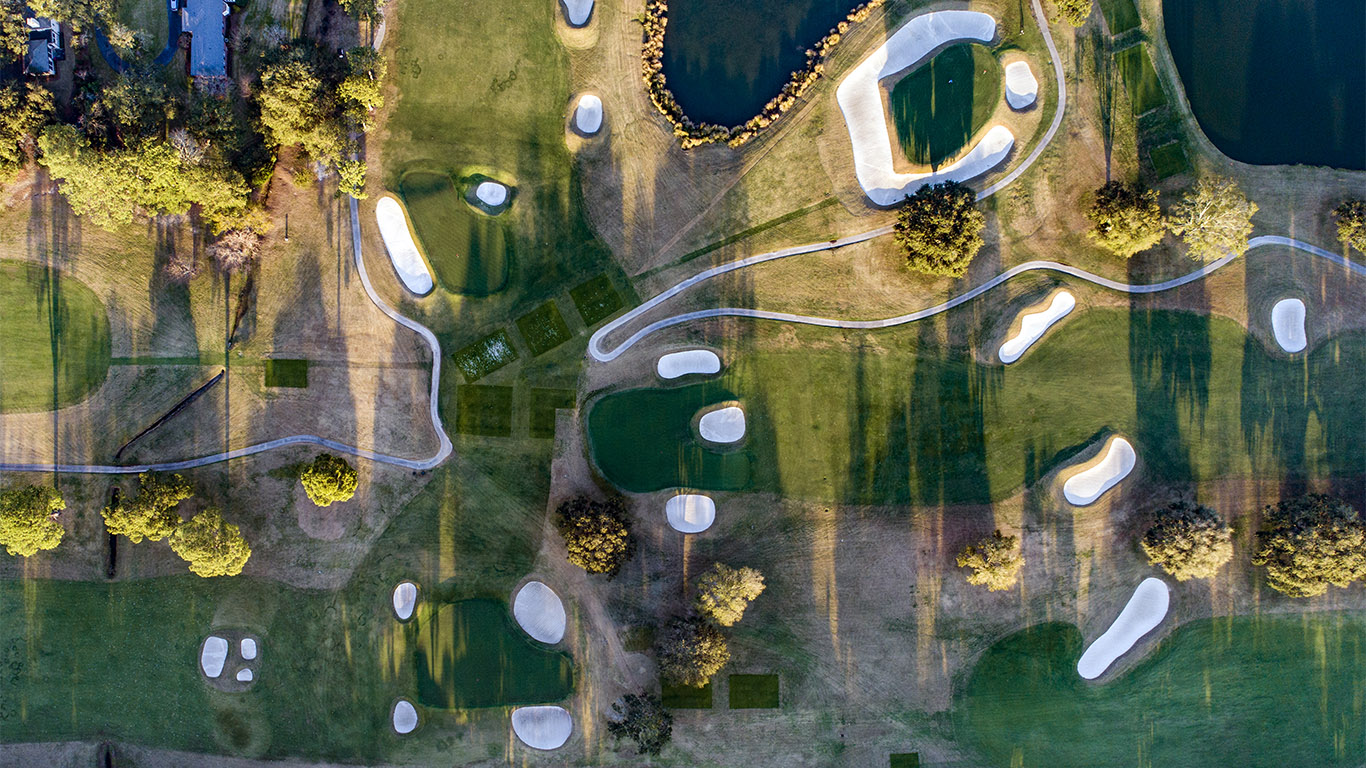
The holes and tee boxes that sit on the back nine ridge 12, 13, 14, 15, 16 and 17
-
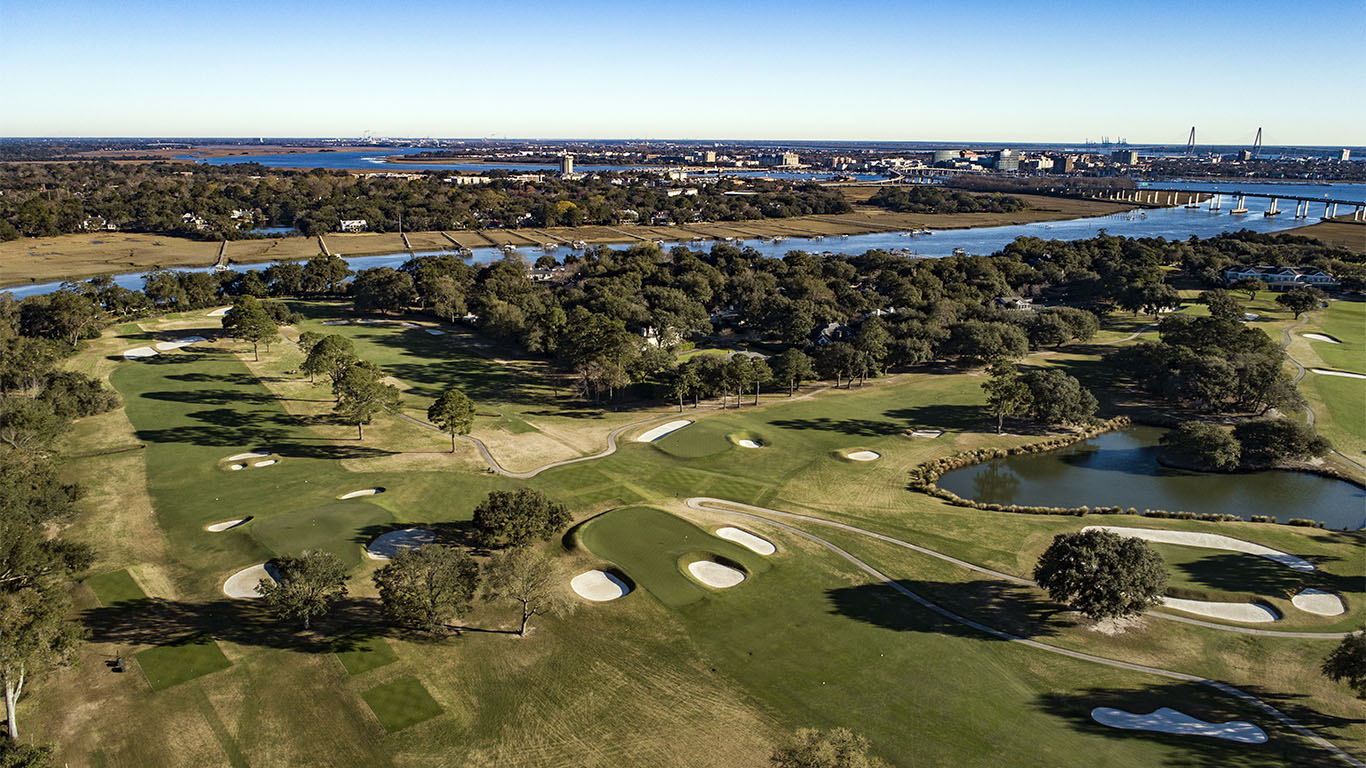
A different angle of the ridgeline tees and holes at Country Club of Charleston
-
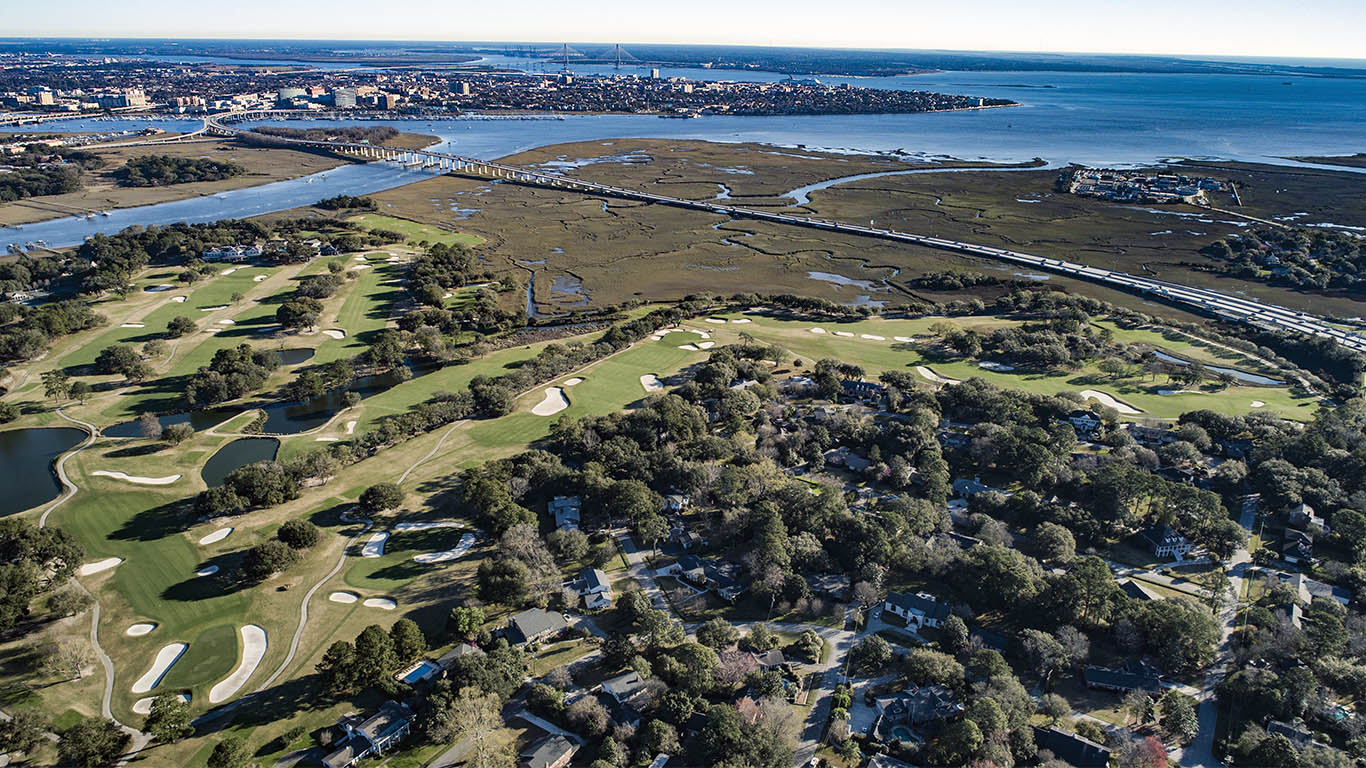
The front nine occupies the property's land along the Ashley River
-
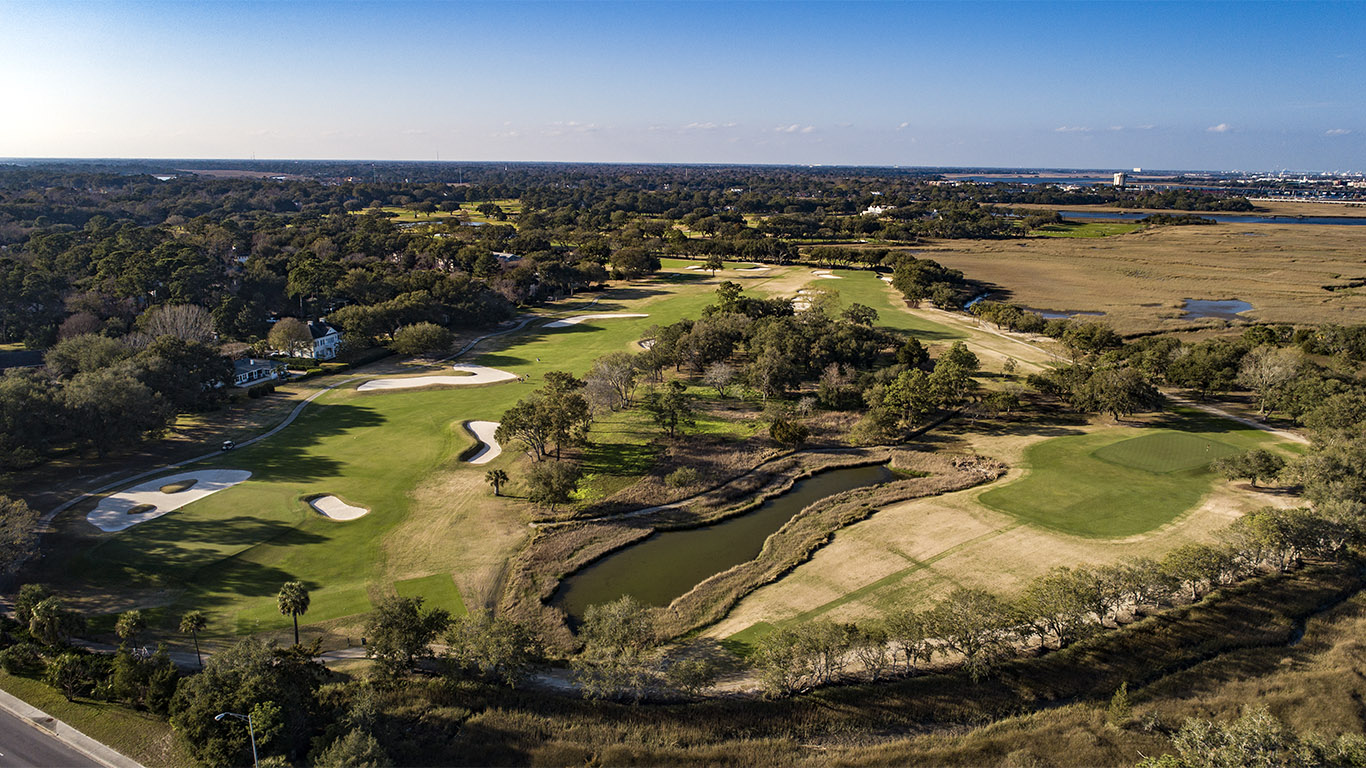
Holes 5, 6 and 7 play along the river.
The ridge
Following the peaceful and serene setting of the Alps par-4 10th, which plays along the Wappoo Creek, the Country Club of Charleston’s finale kicks into overdrive.
The par-3 11th is a reverse redan hole, one of the most used par 3 designs in golf. The tee box sits on a former wartime embankment and looks down on perhaps the boldest rendition of the redan in the country. The green angles and slopes from left to right and runs away from players. It’s built up close to 15 feet and guarded on the right and left by treacherous bunkering and in front by a vicious false front. The hole requires a perfect tee shot to make birdie. Misses in the bunker make for difficult bogeys, and those who miss right or short face challenging up-and-downs. The only refuge is long, where players earn a chip back up the slope.
-
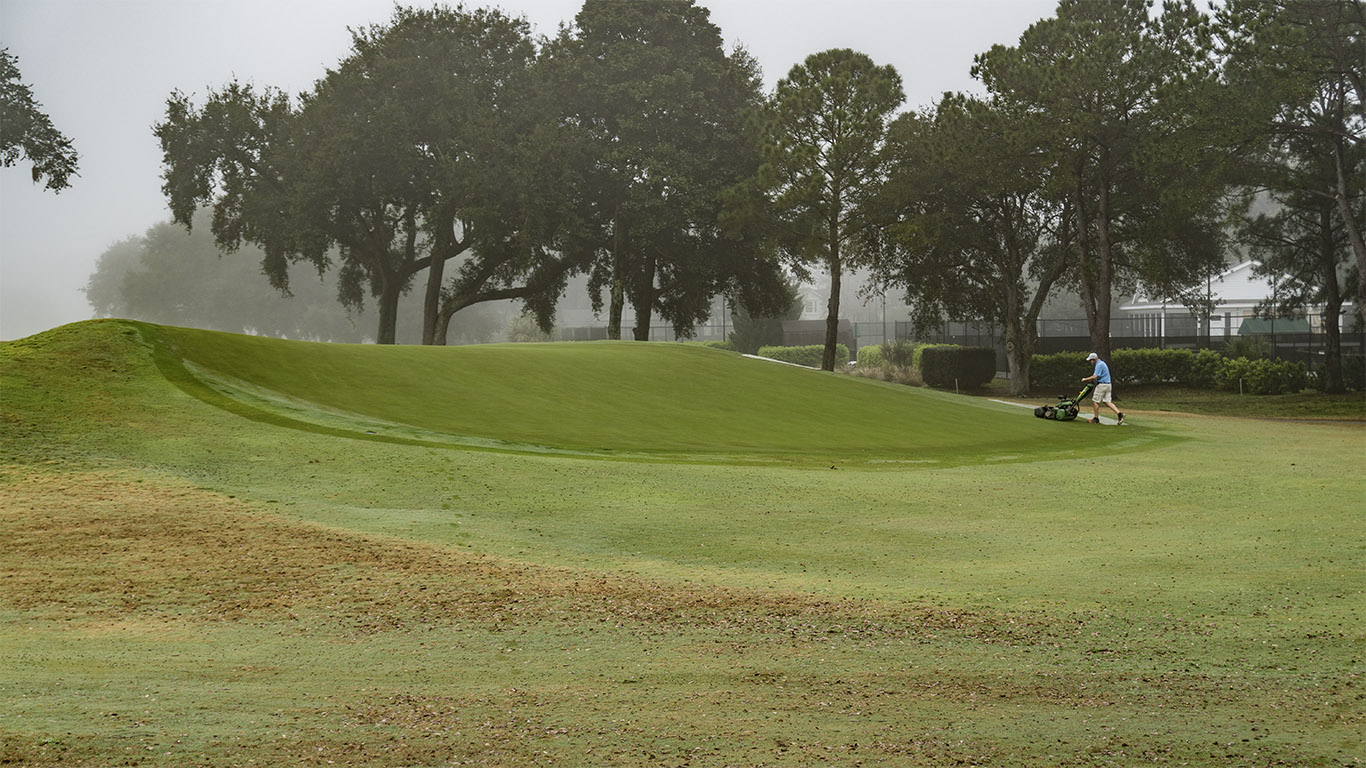
The tremendous scale of the false front at CC of Charleston's 11th
-
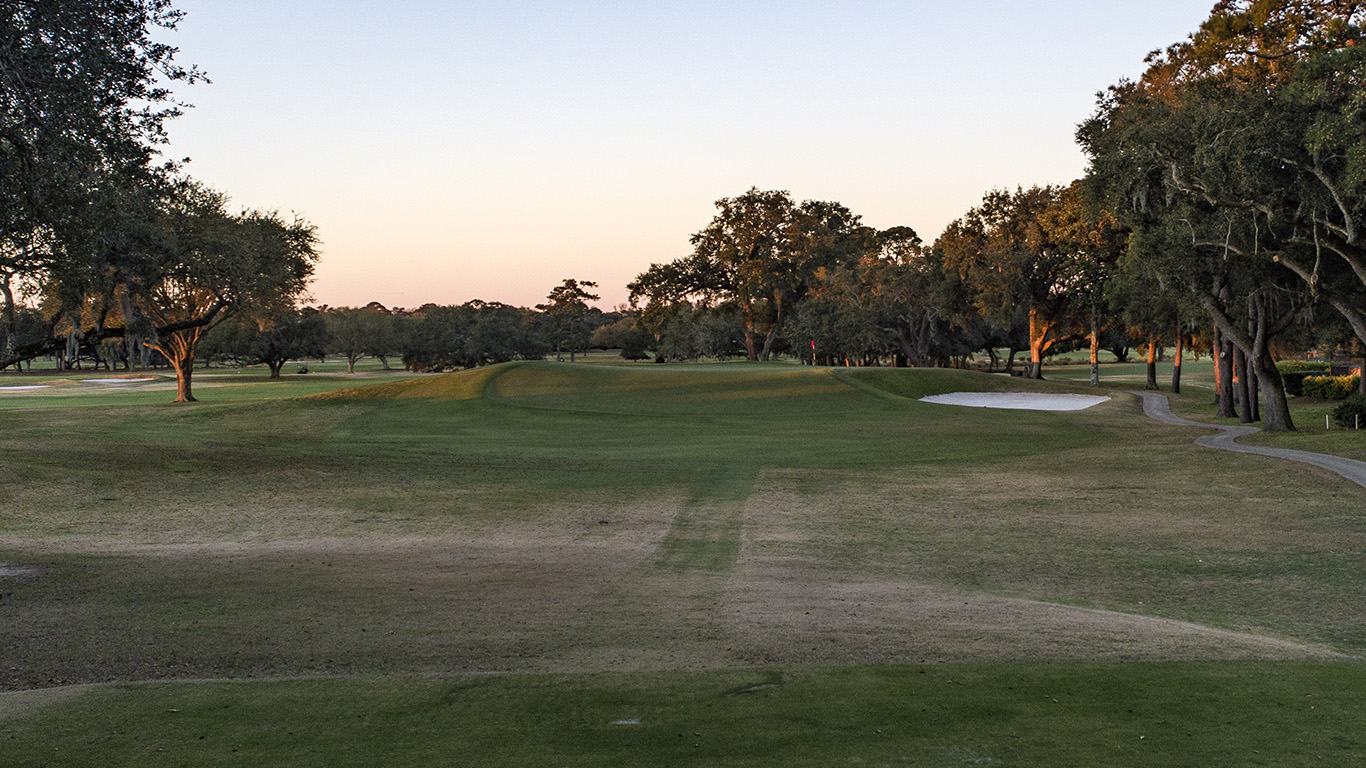
The 11th at CC of Charleston from the tee box
-
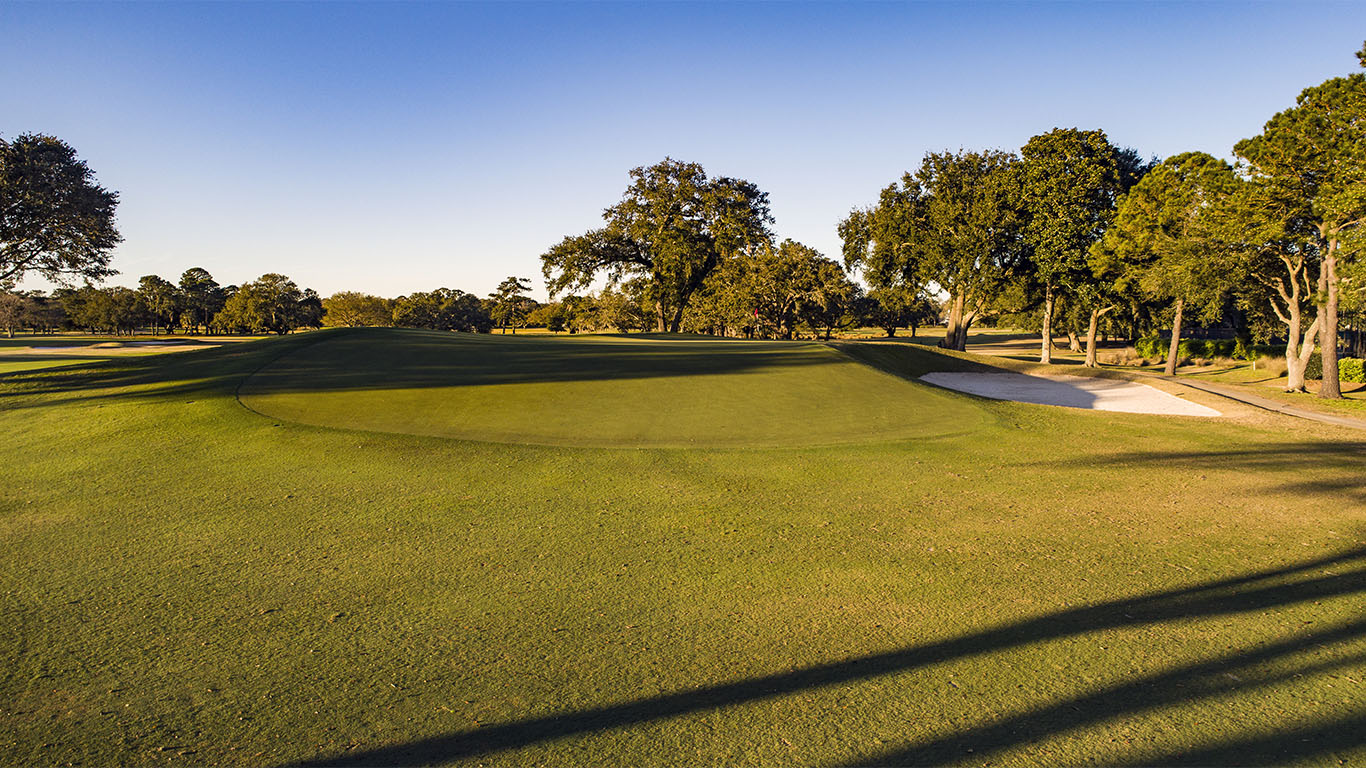
In front of the 11th
-
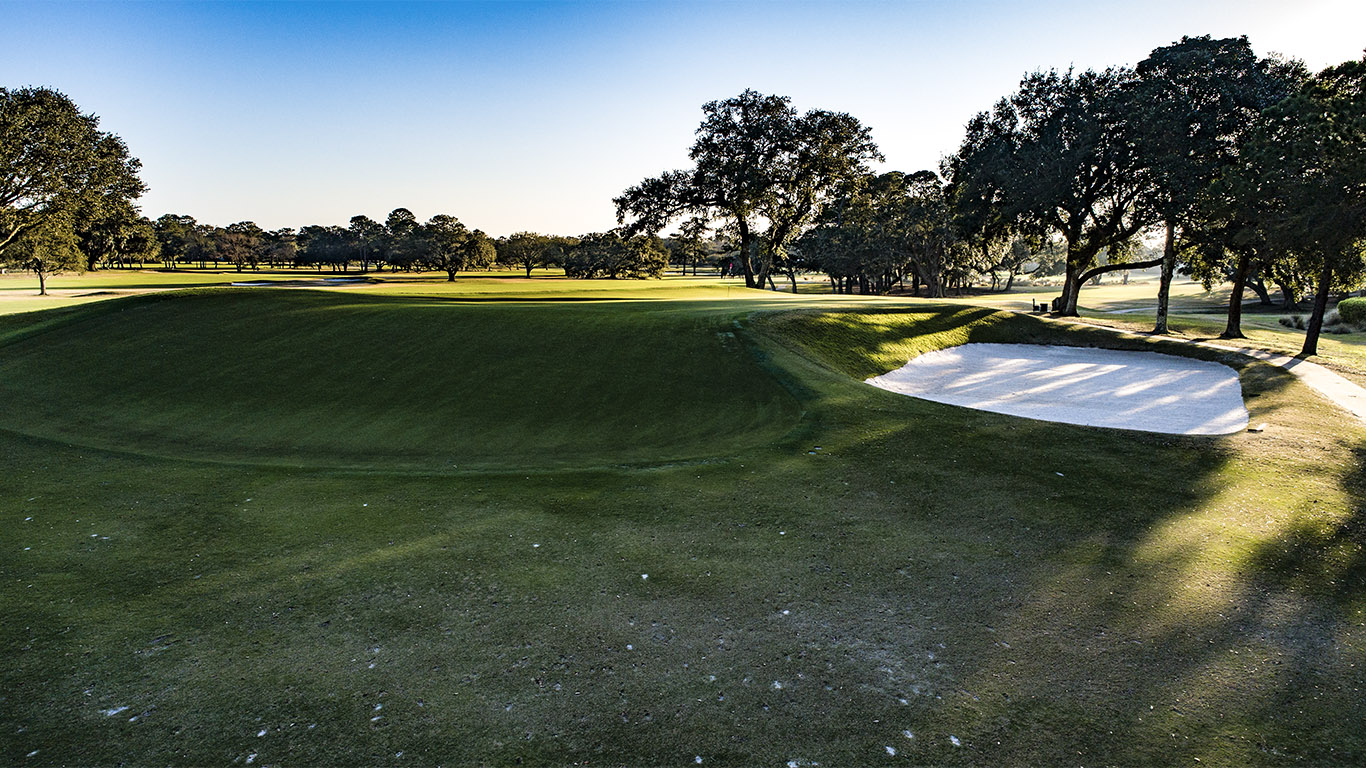
A look at the deep right bunker at Charleston
-
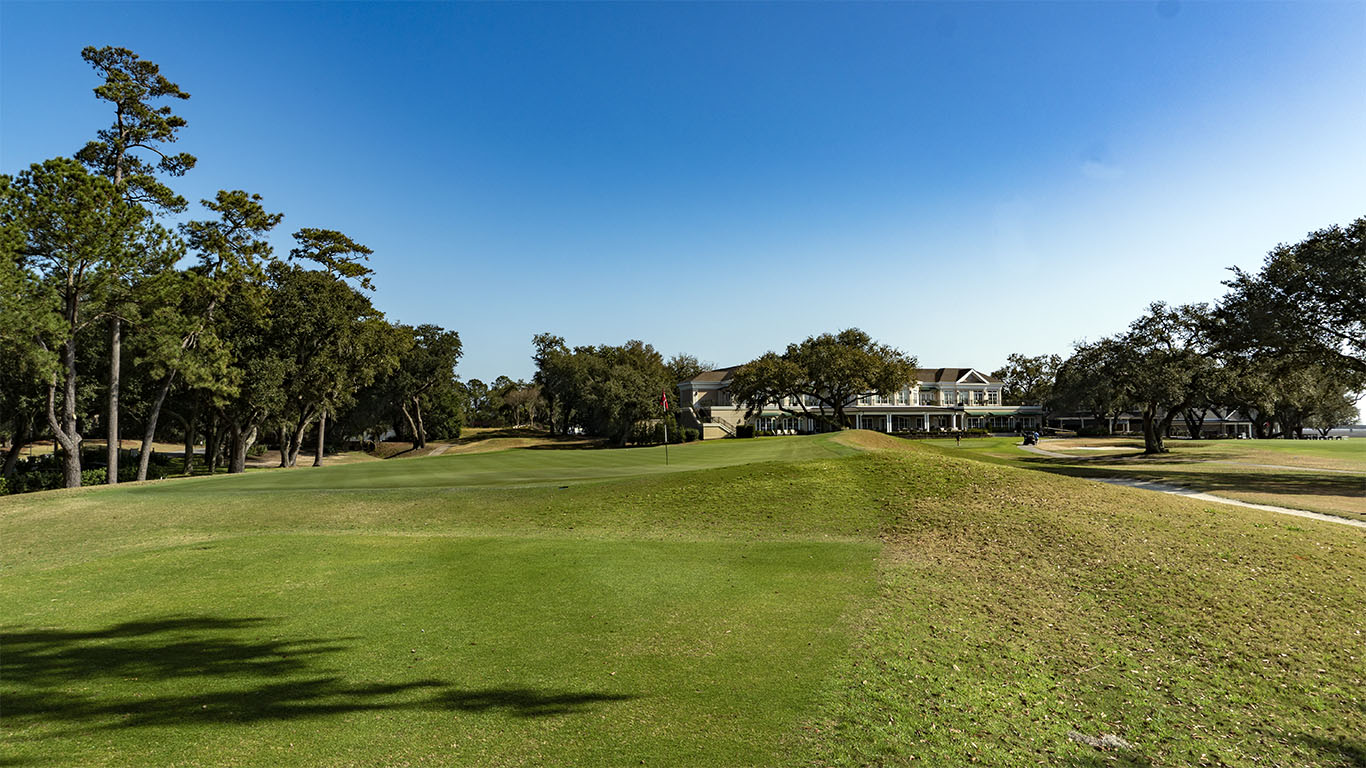
-
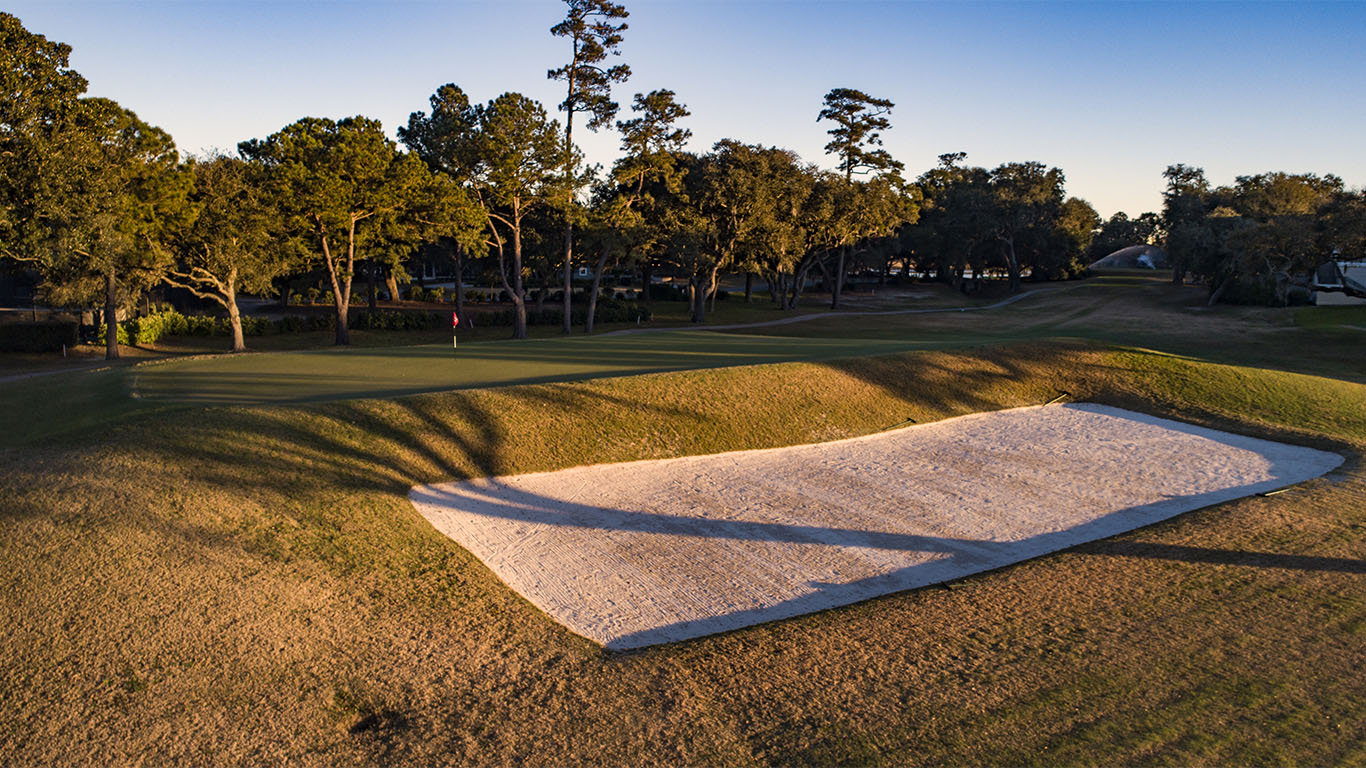
The short par-4 12th, the Country Club of Charleston’s rendition of the Road Hole, gets players to the ridge where the back nine unfolds. The narrow and long green asks players to challenge the mammoth live oak which guards the ideal line of the hole. The fairway cambers to the left, tumbling balls that avoid the risk further off line and leaving a disadvantaged angle to a sliver of a green.
-
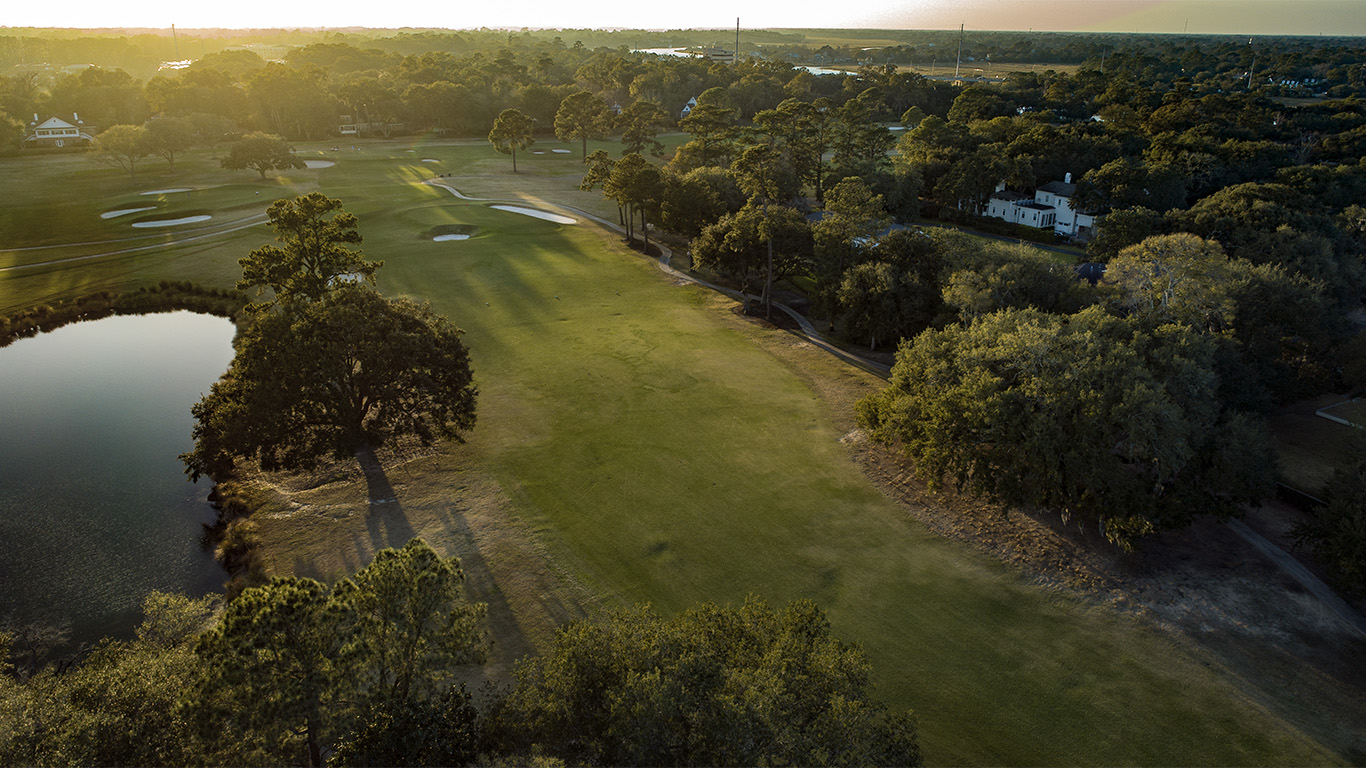
High above the road hole 12th
-
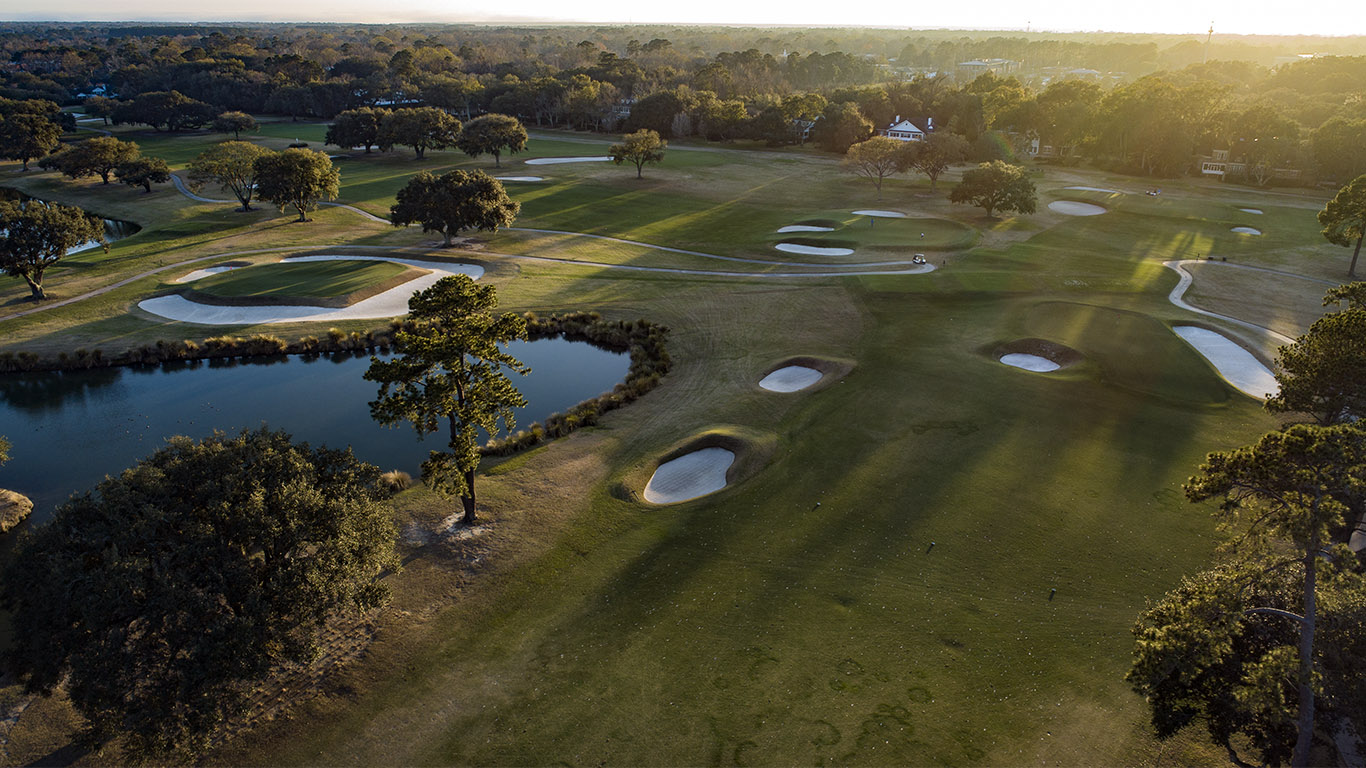
The preferred angle to approach the 12th green is up the right
-
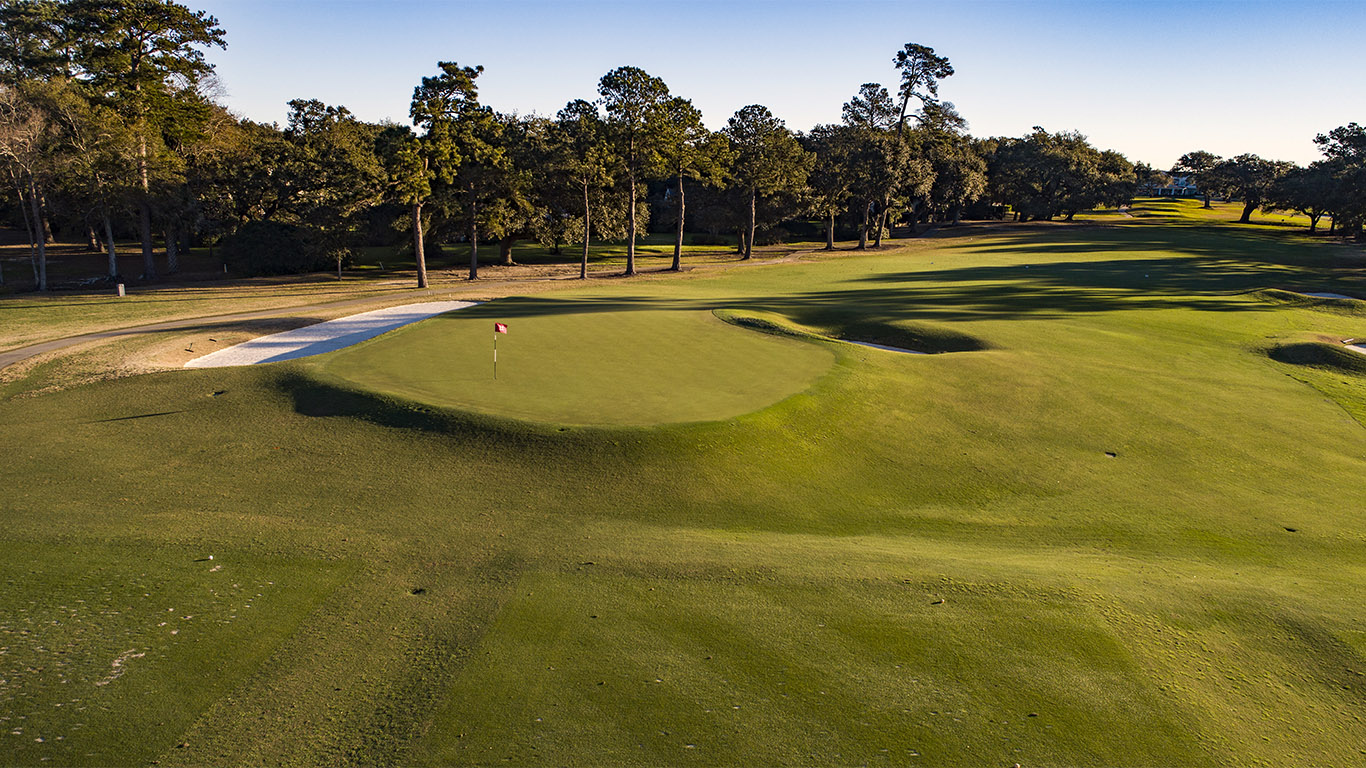
Behind the 12th green
-
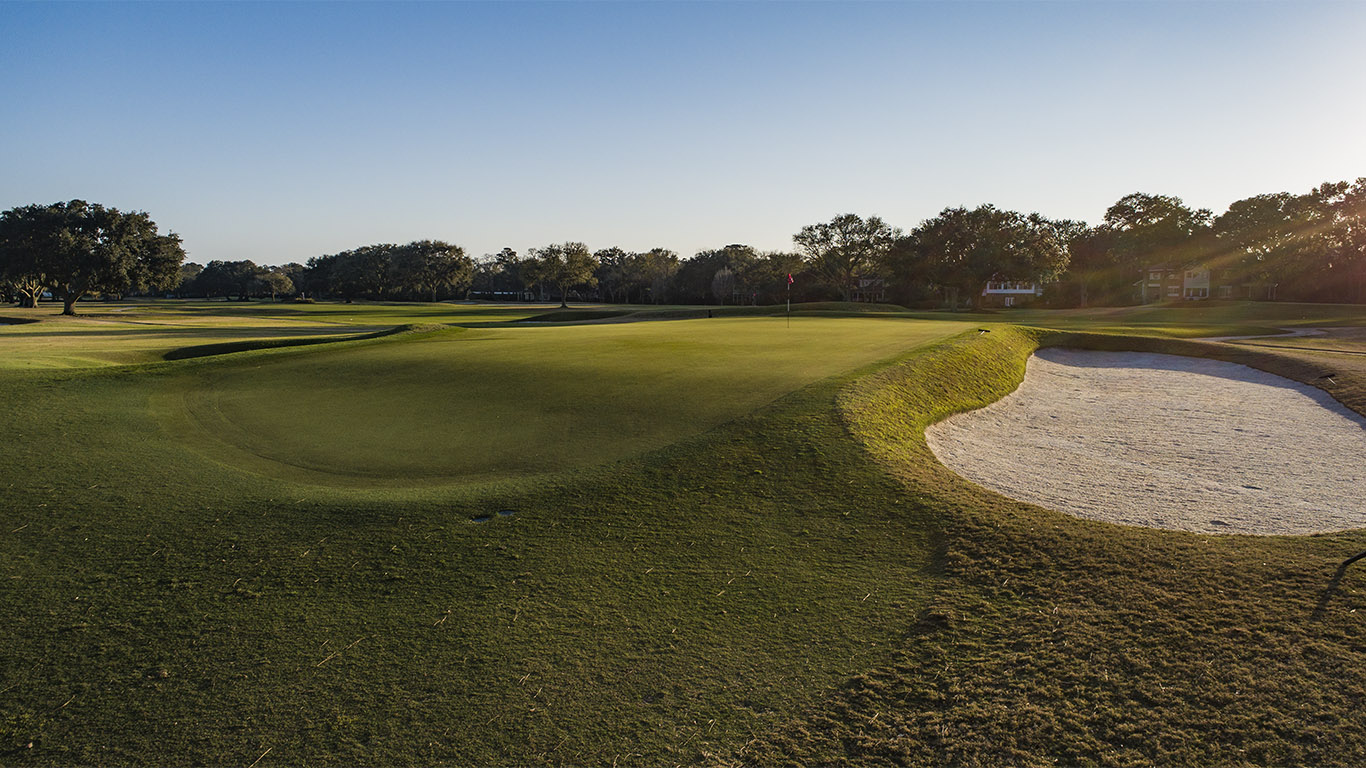
The false front on the 12th green at CC of Charleston
-
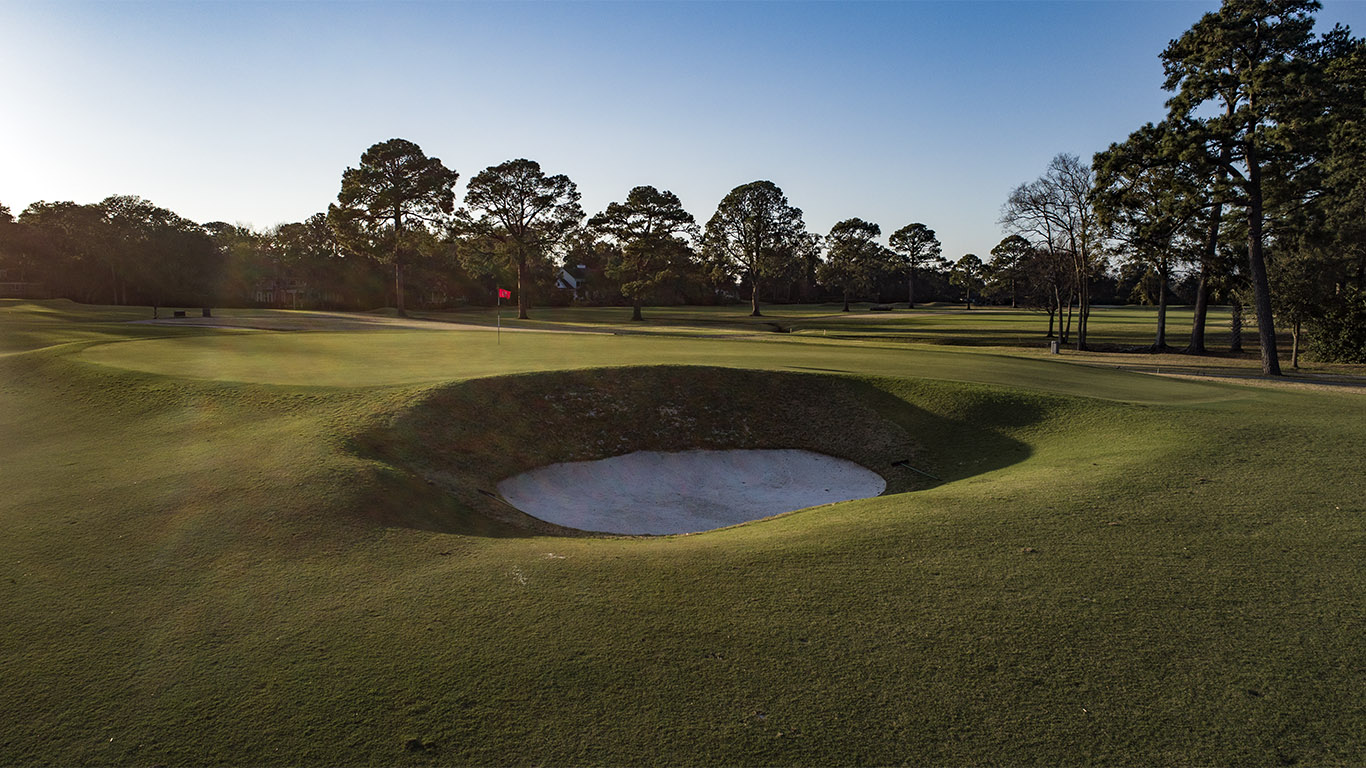
The pot bunker that guards the front of the 12th green
-
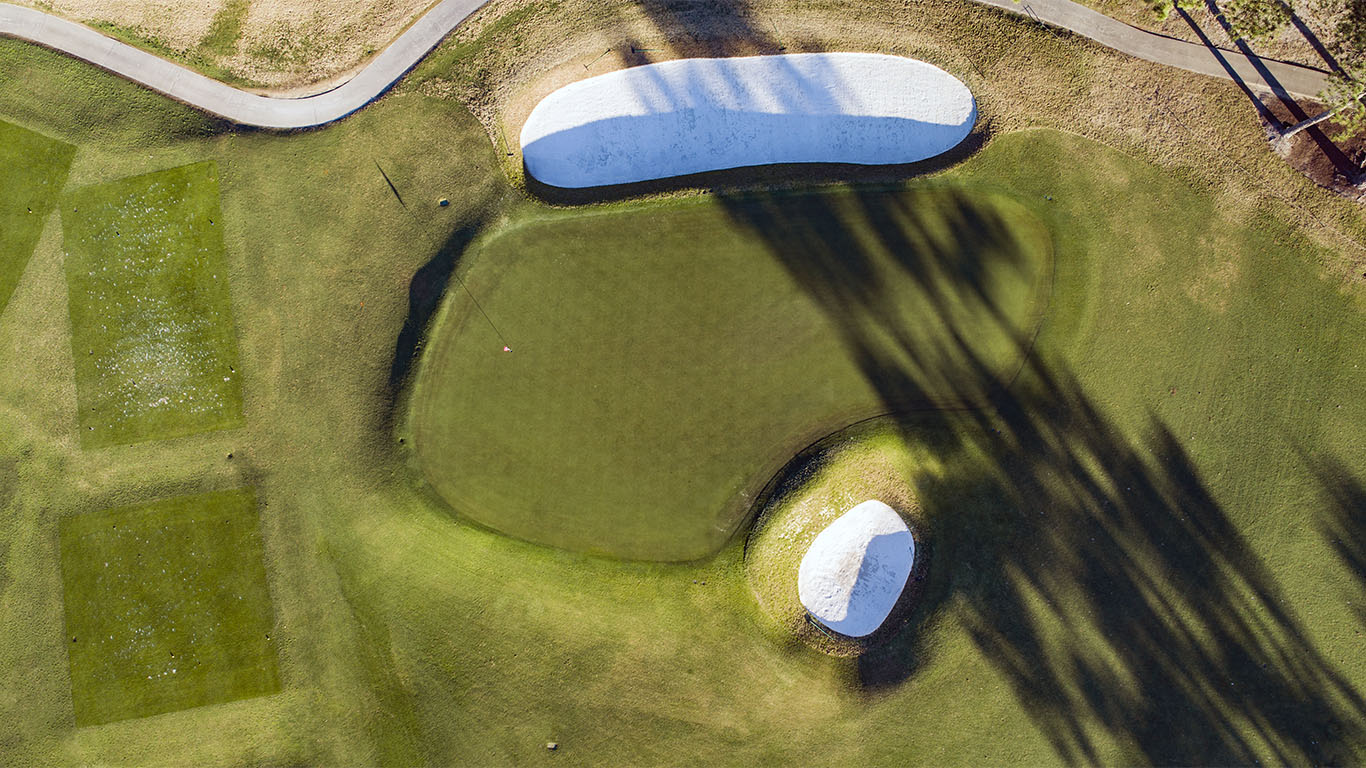
An overhead look at the 12th
The 13th plays out to the border of the property, and the ideal approach angle is guarded by the property line and a series of bunkers. Accentuating the hole is a massive pit bunker on the left, which is blind from the approach.
-
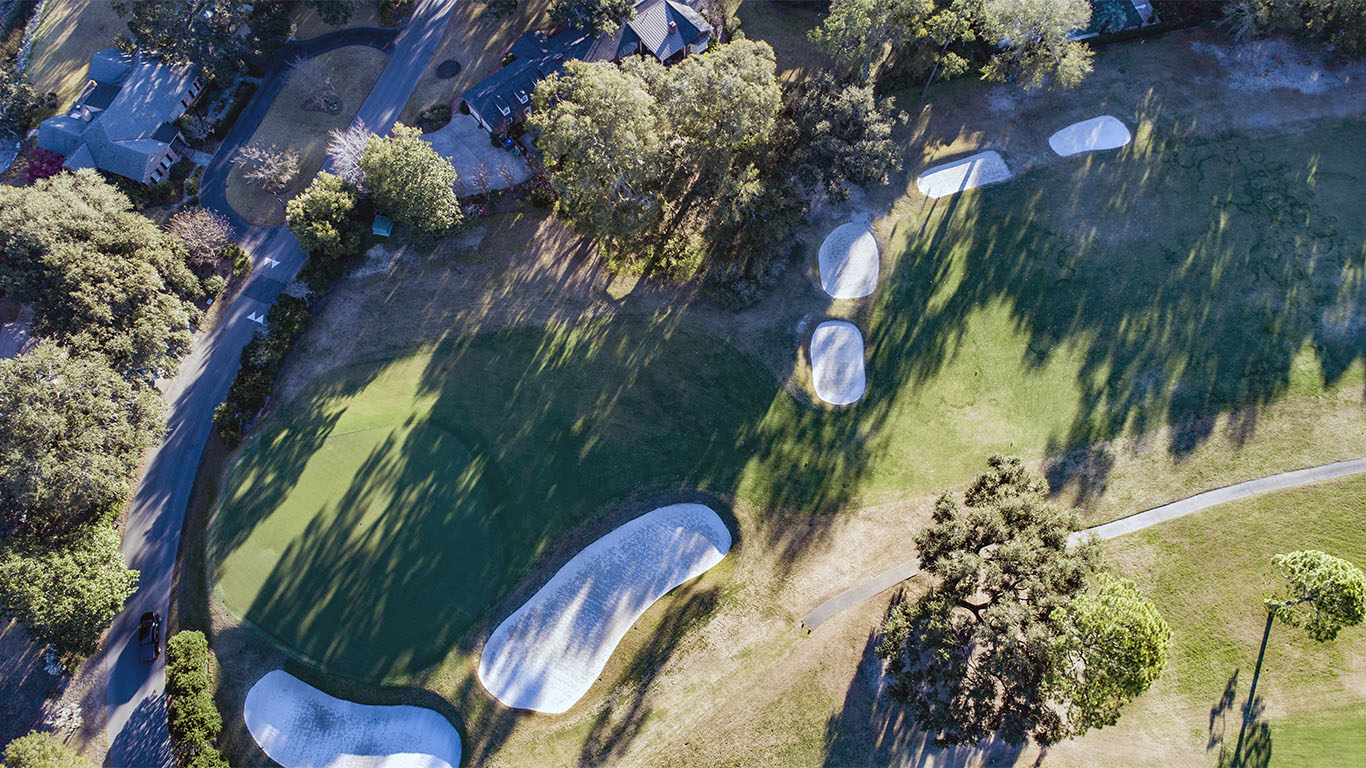
Overhead the 13th green
-
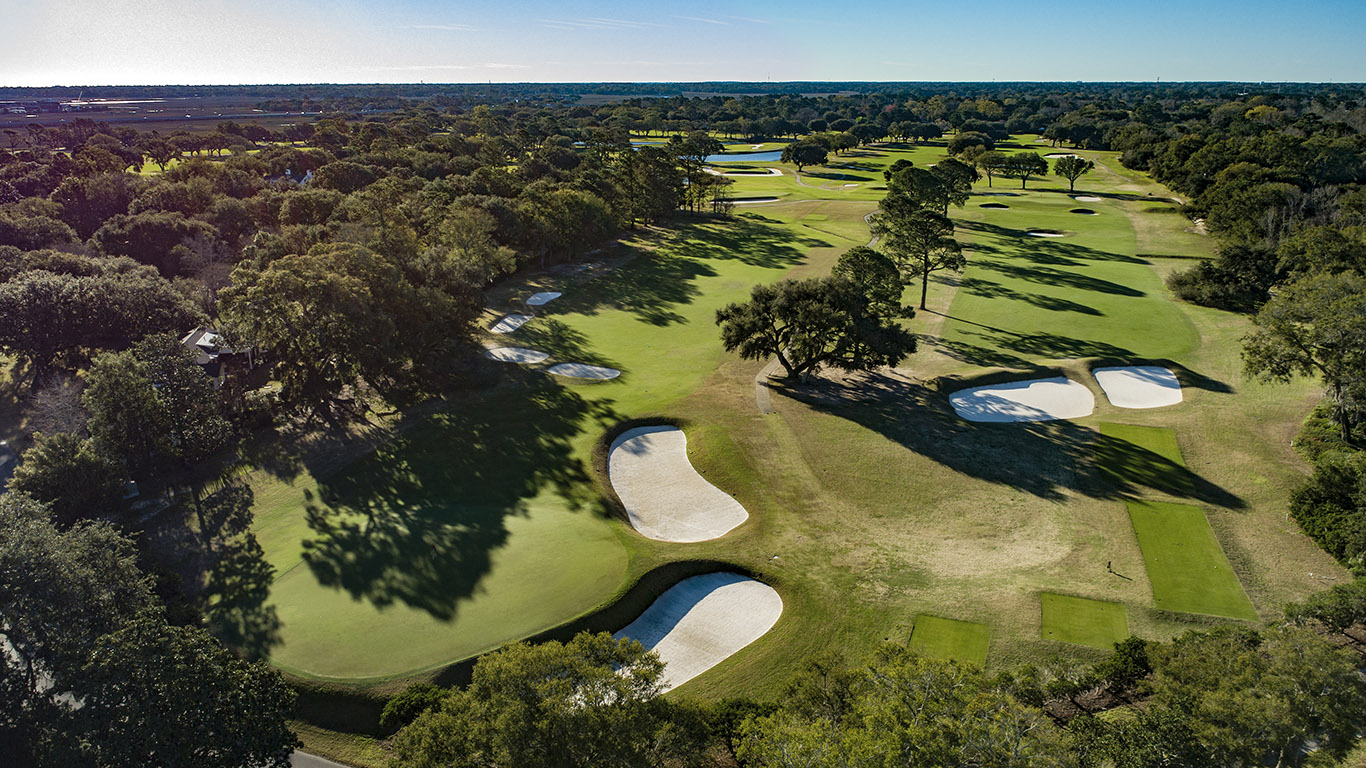
Behind the 13th and looking up the 14th
-
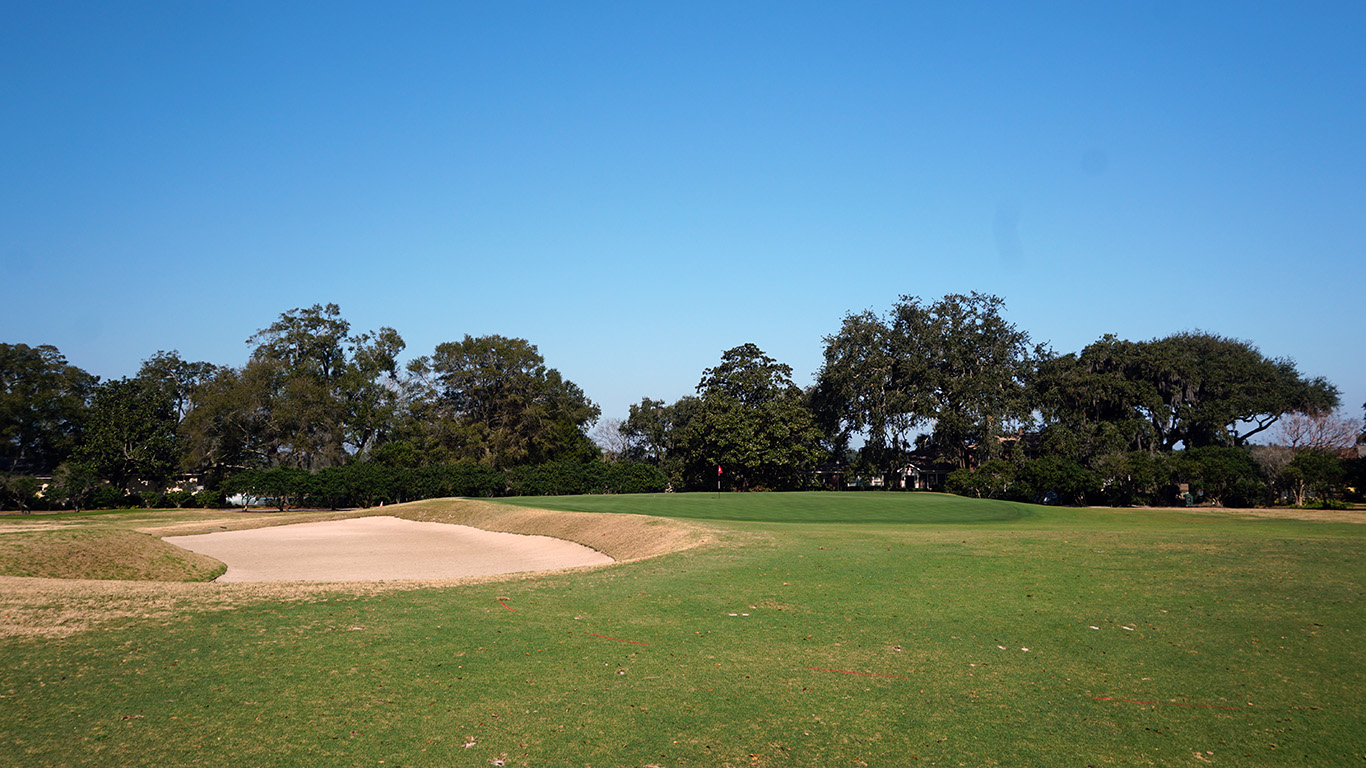
Approaching the 13th green
Playing back to the ridge is the par-4 14th, which features a plateau-style green and a principal’s nose bunker. A ditch cuts into the fairway on either side and forces players to decide: lay back or play aggressive. The opportunity to gain a shorter approach is inviting because of the severe green. The front right sits at ground level. The square is surrounded by a narrow, elevated portion of the green which wraps around the front portion in an L shape. Pins on this tier require a precise shot, and the reward for having a short iron or wedge to attack is profound.
-
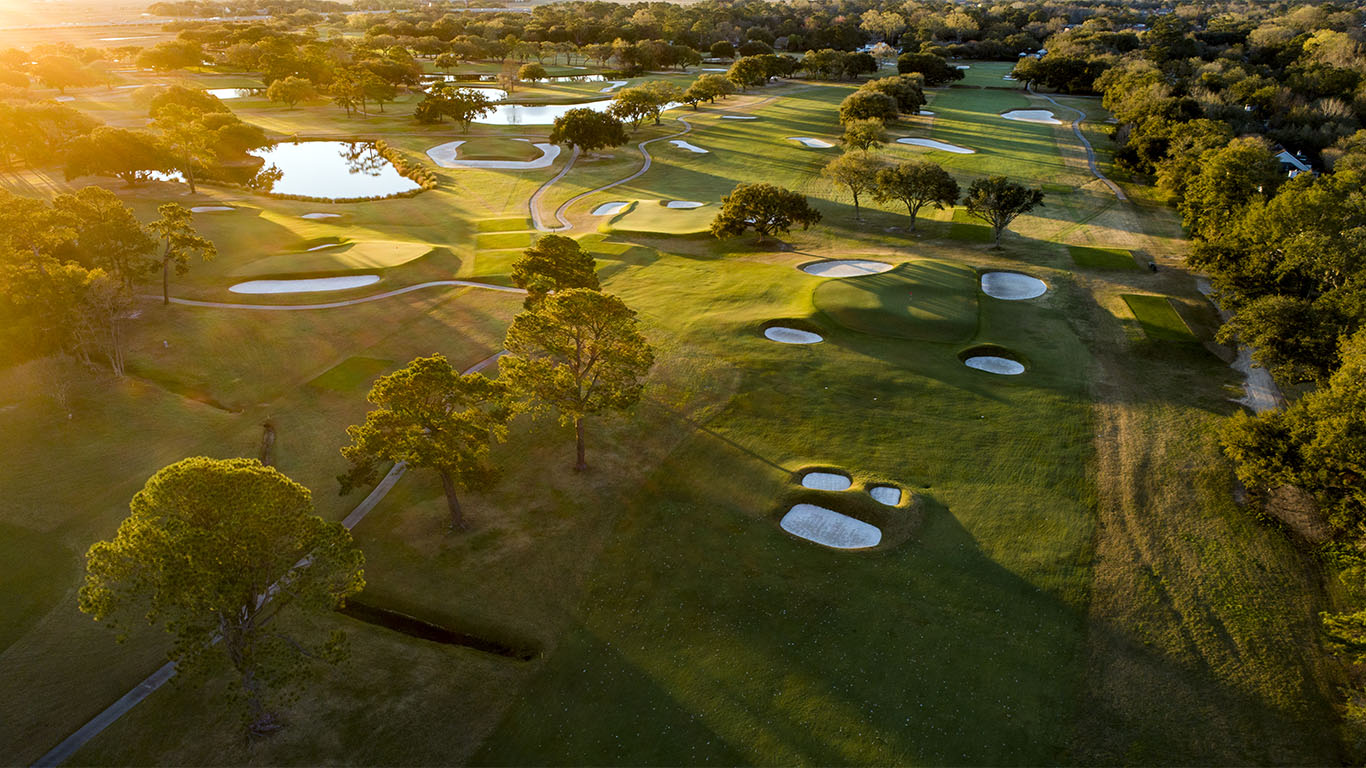
High above the 14th
-
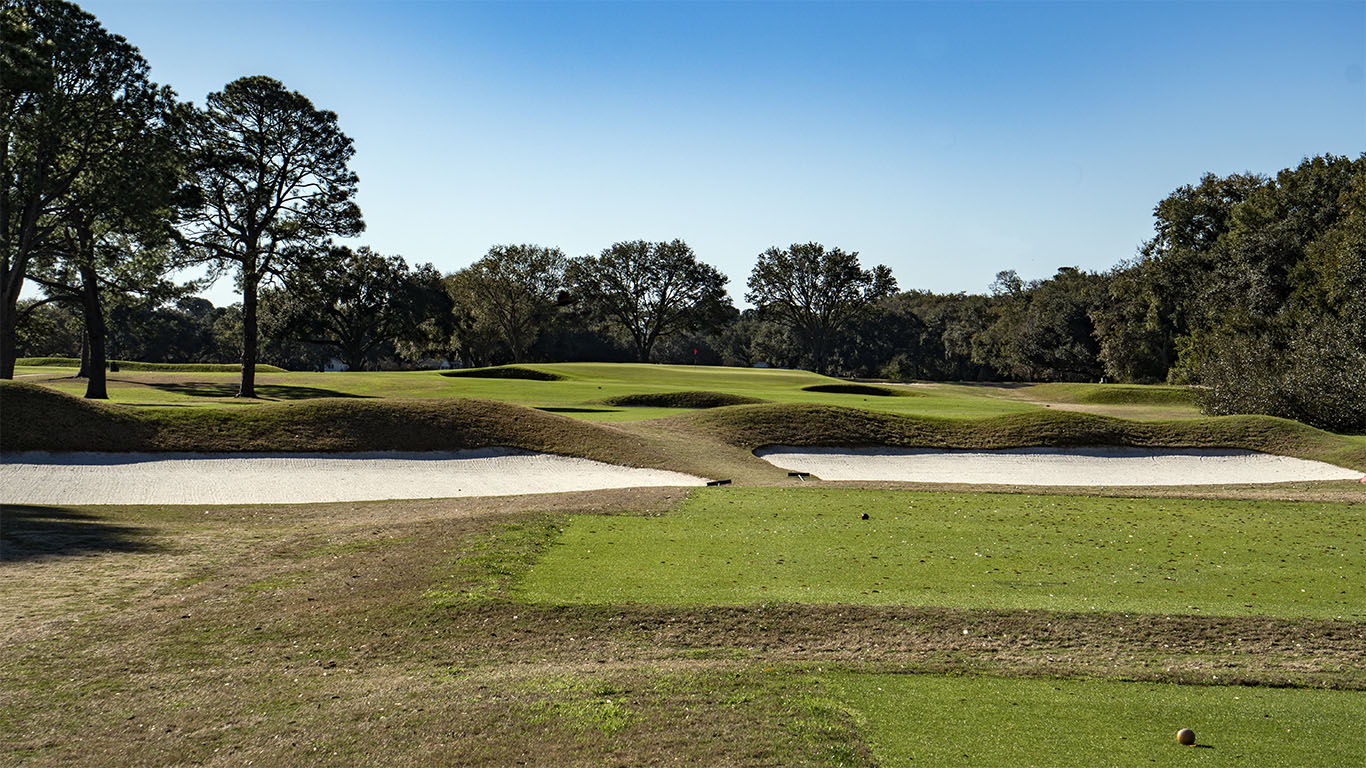
The view from the tee of the bold bunkering the 14th at CC of Charleston
-
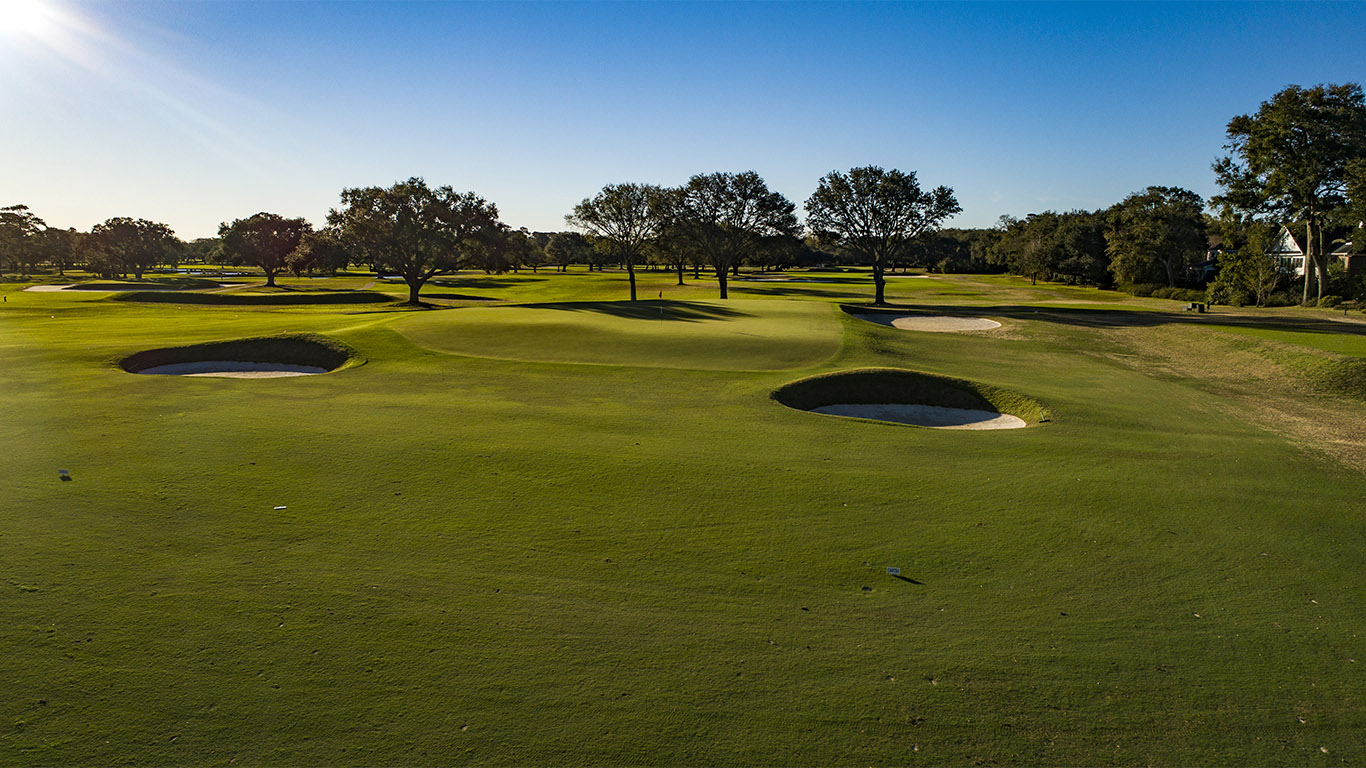
The plateau green
-
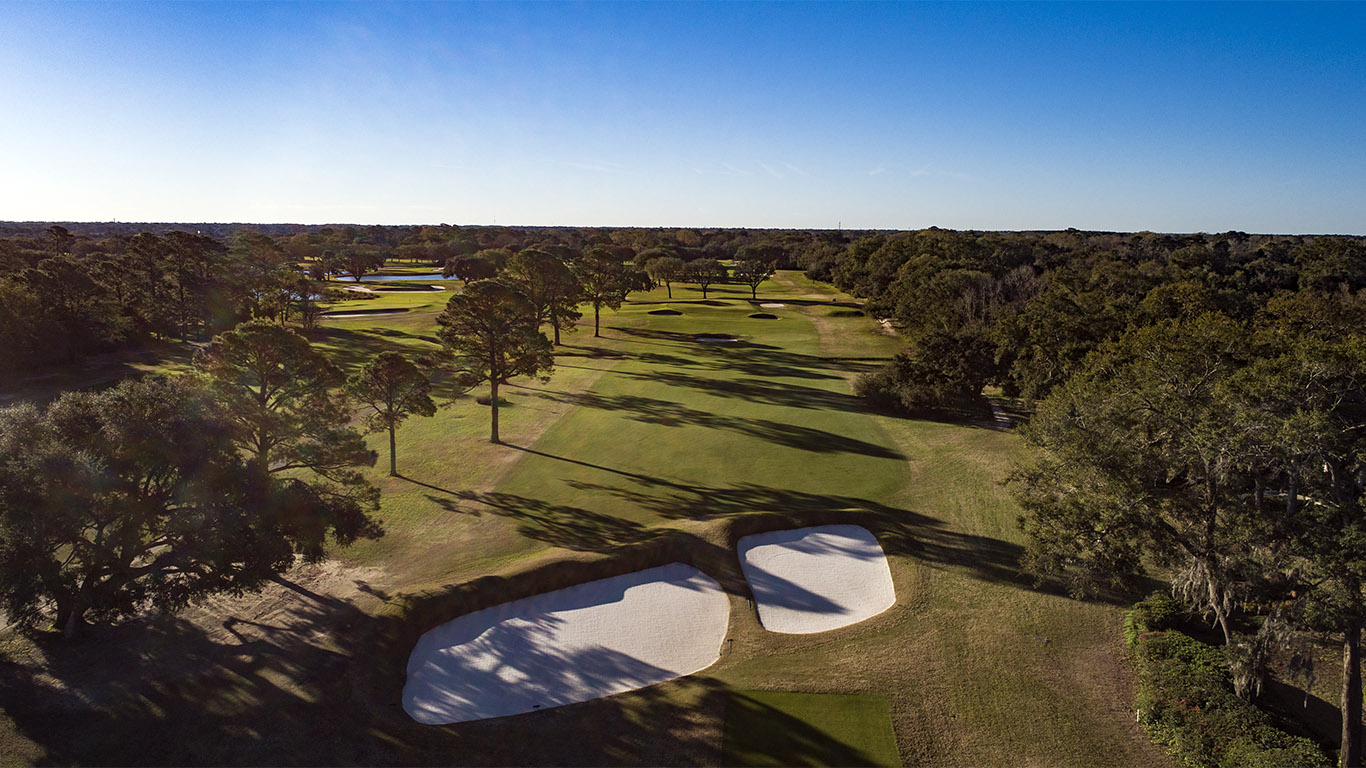
A look above the tee at the 14th
Teeing off from the top of the ridge, players see the only par 5 on the back nine in the 15th. The hole’s dominant feature is the berm that cuts across the fairway. The berm, which retains its original mounding bisecting the fairway but no longer has its tee side bunkers, puts pressure on the tee shot. Any drive that fails to find the fairway will make it difficult to advance past the berm on the second shot, leaving a long semi-blind approach to a green with a pronounced center spine.
-
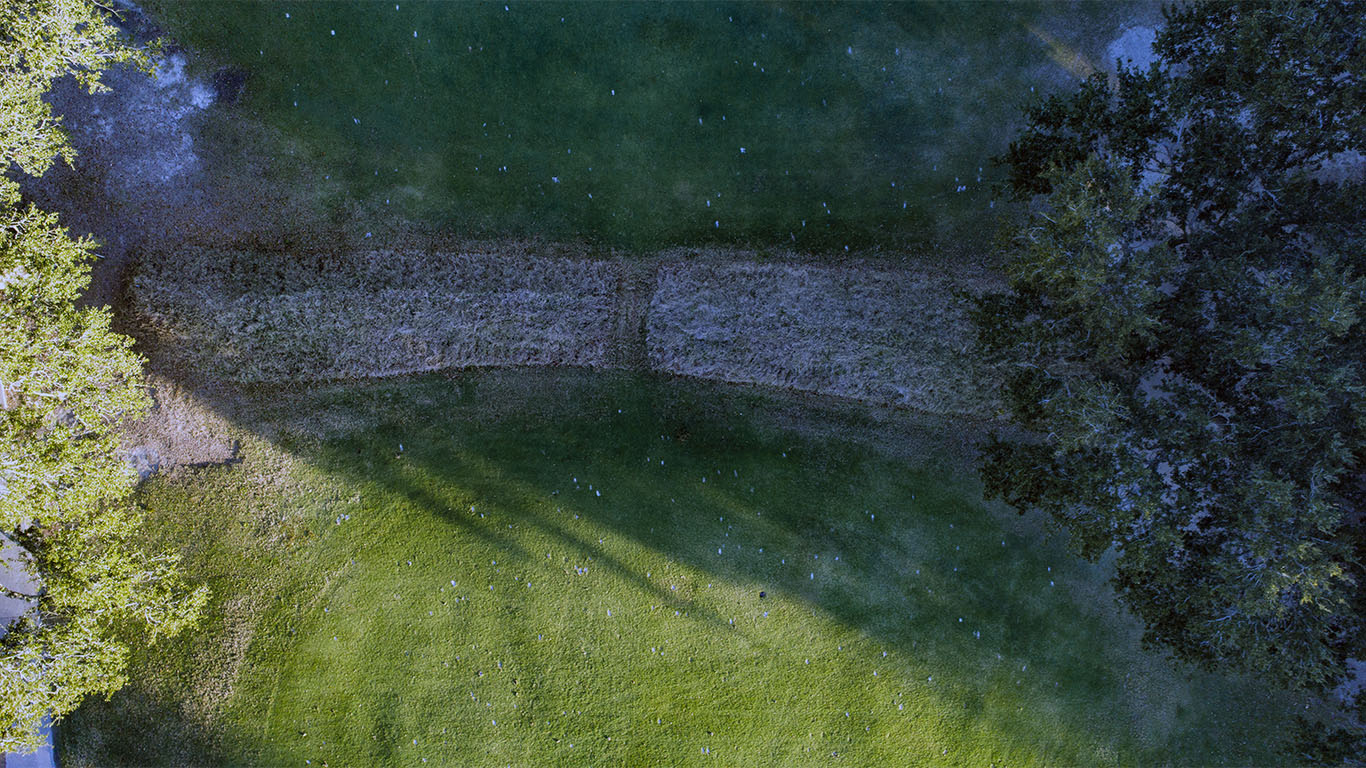
Overhead the berm on the 15th
-
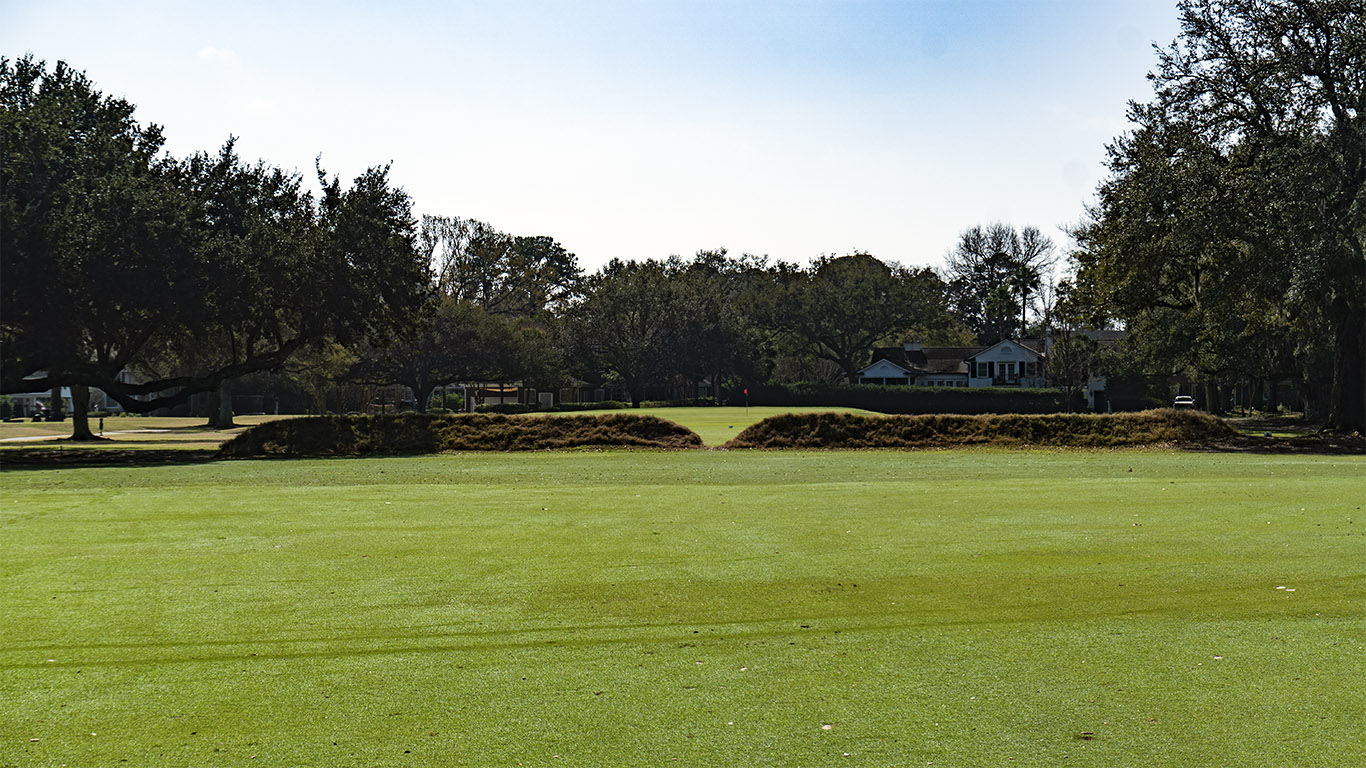
The berm on the 15th at CC of Charleston
-
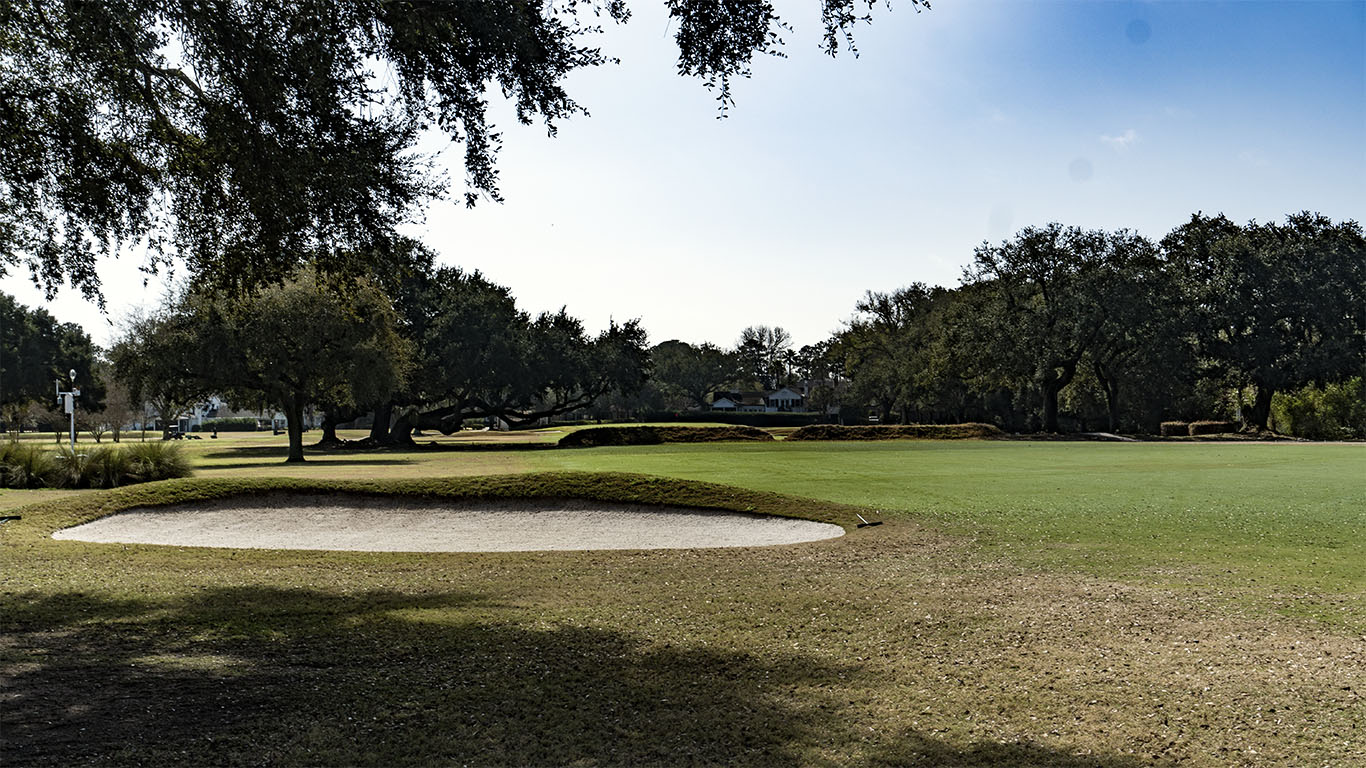
From left of the berm
-
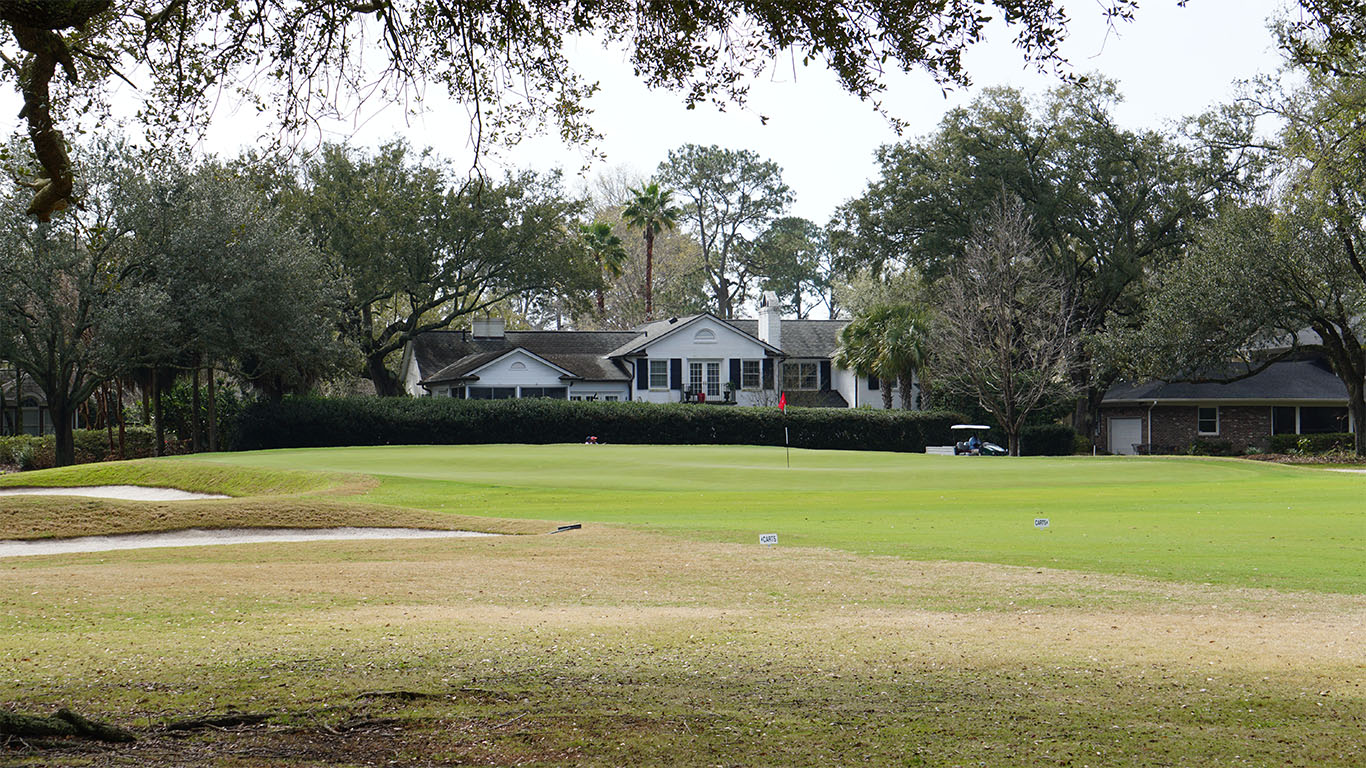
The 15th green
The drama builds with the long par-4 16th: the astounding lion’s mouth green complex. The green sits back into the ridgeline and is the only version of the green that Raynor ever built. The day’s pin position will dictate the strategy of the hole thanks to the large bunker that eats into the center of the green complex. When the pin is right or center, the right half of the fairway is preferred; when it’s left, the left side should be favored. The women will be hitting long irons into this green, so finding the right side of the fairway is paramount to generating a scoring opportunity.
-
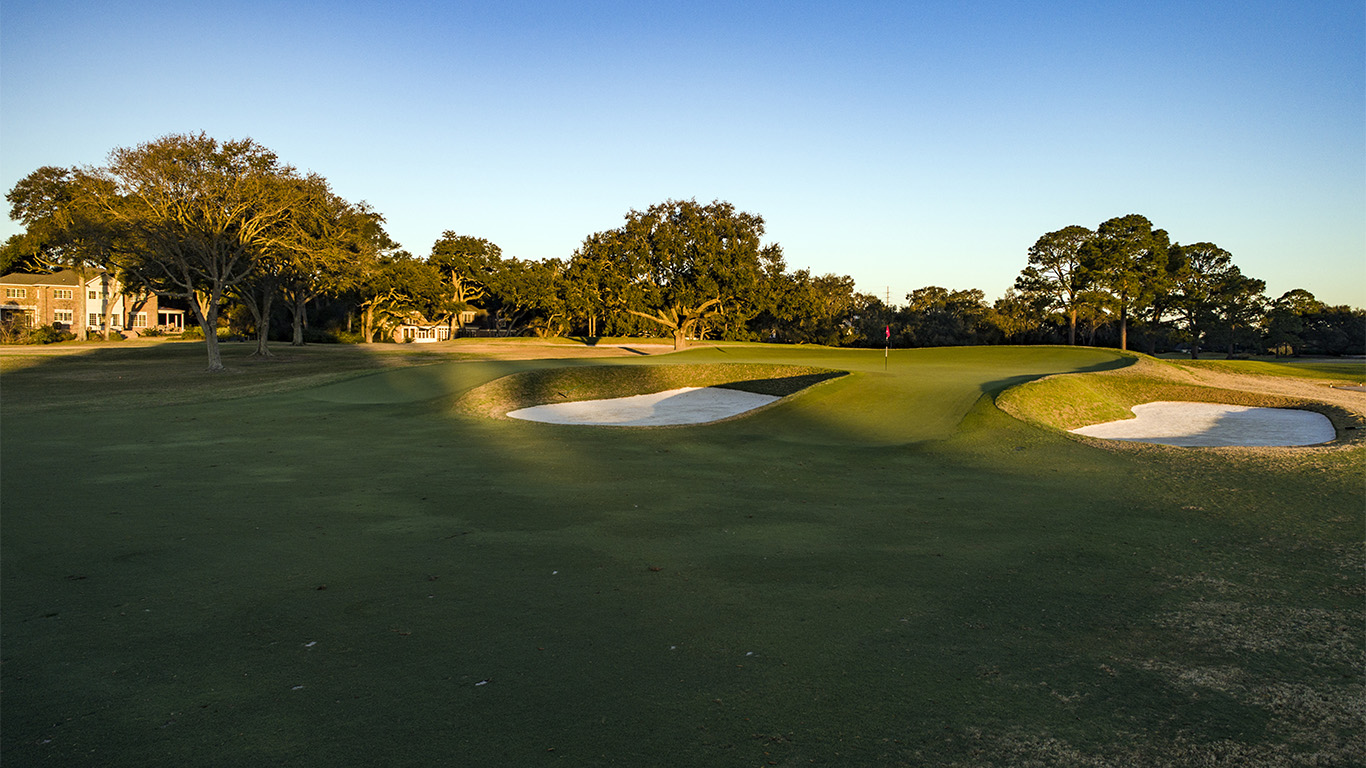
Just right of the lionsmouth green
-
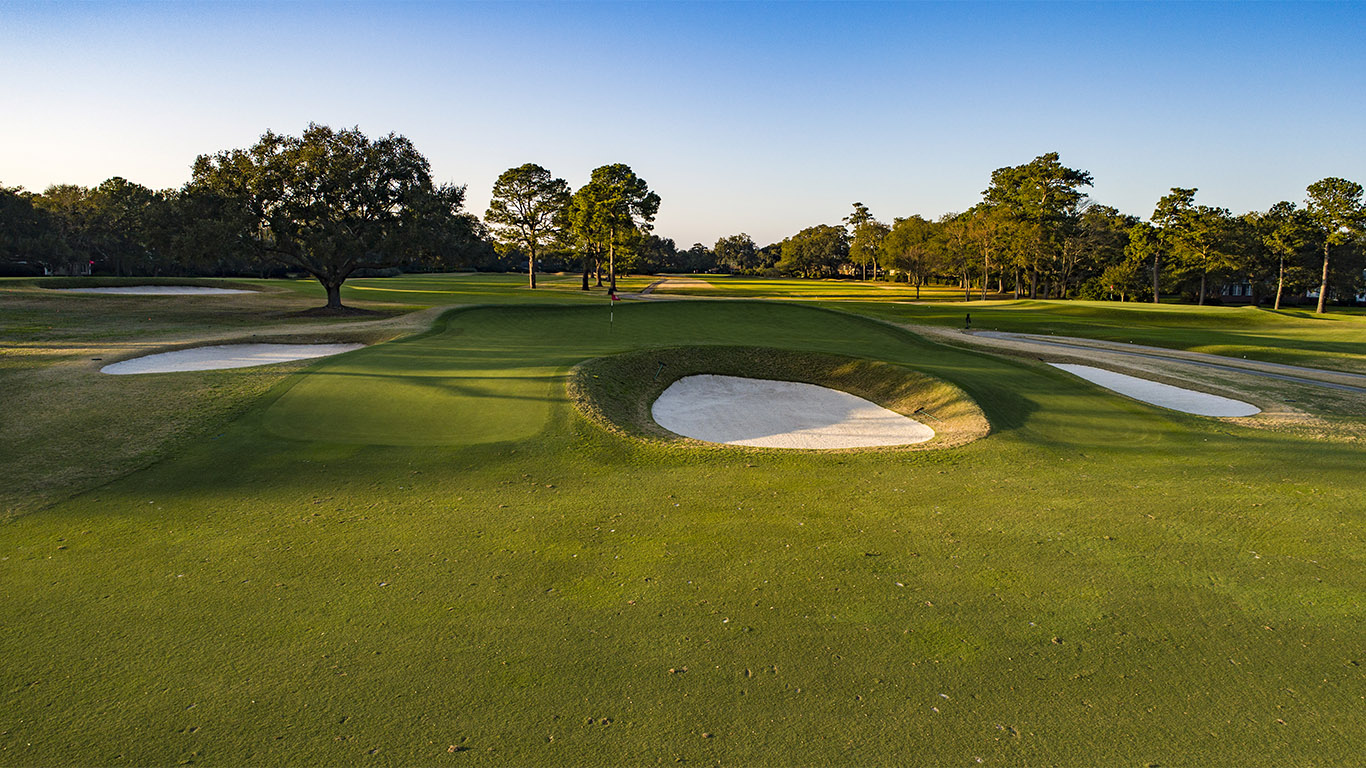
In front of the lions mouth green
-
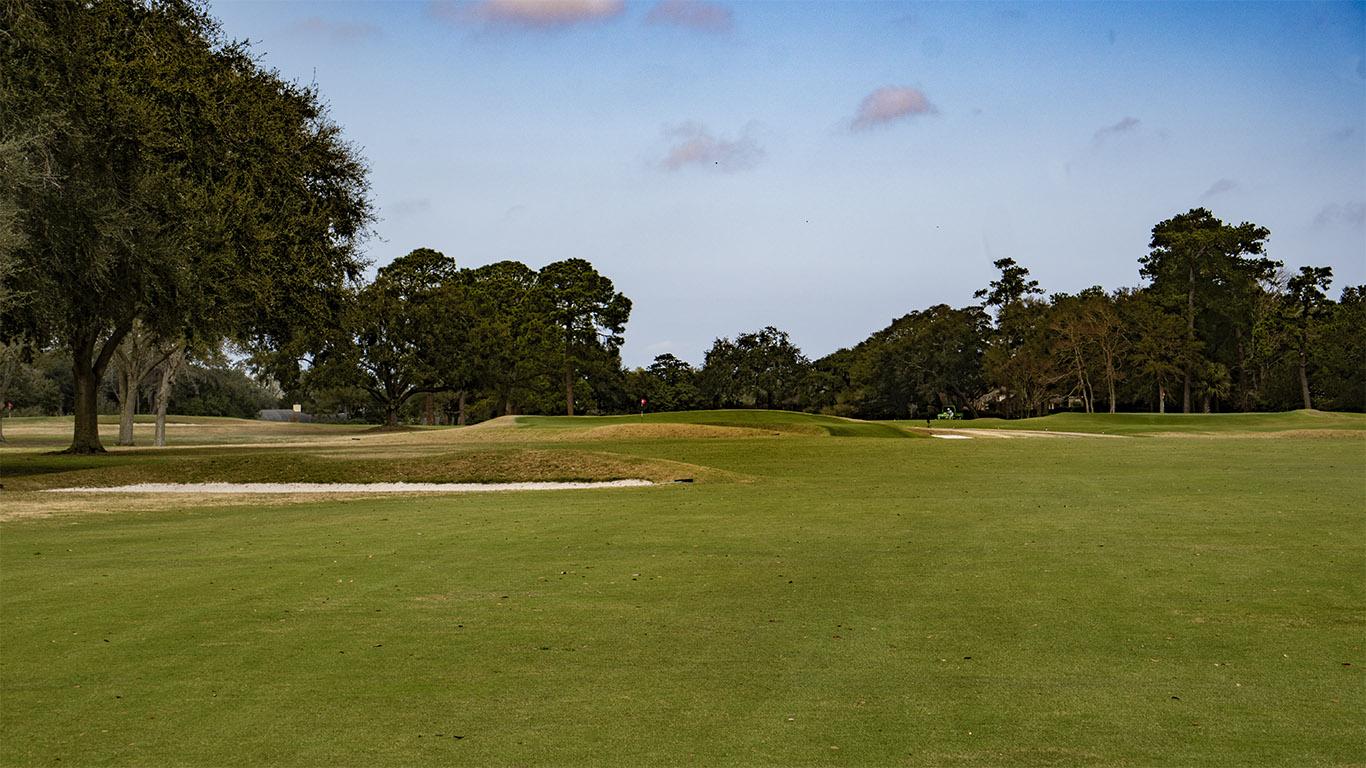
A look at the fairway of the 16th
-
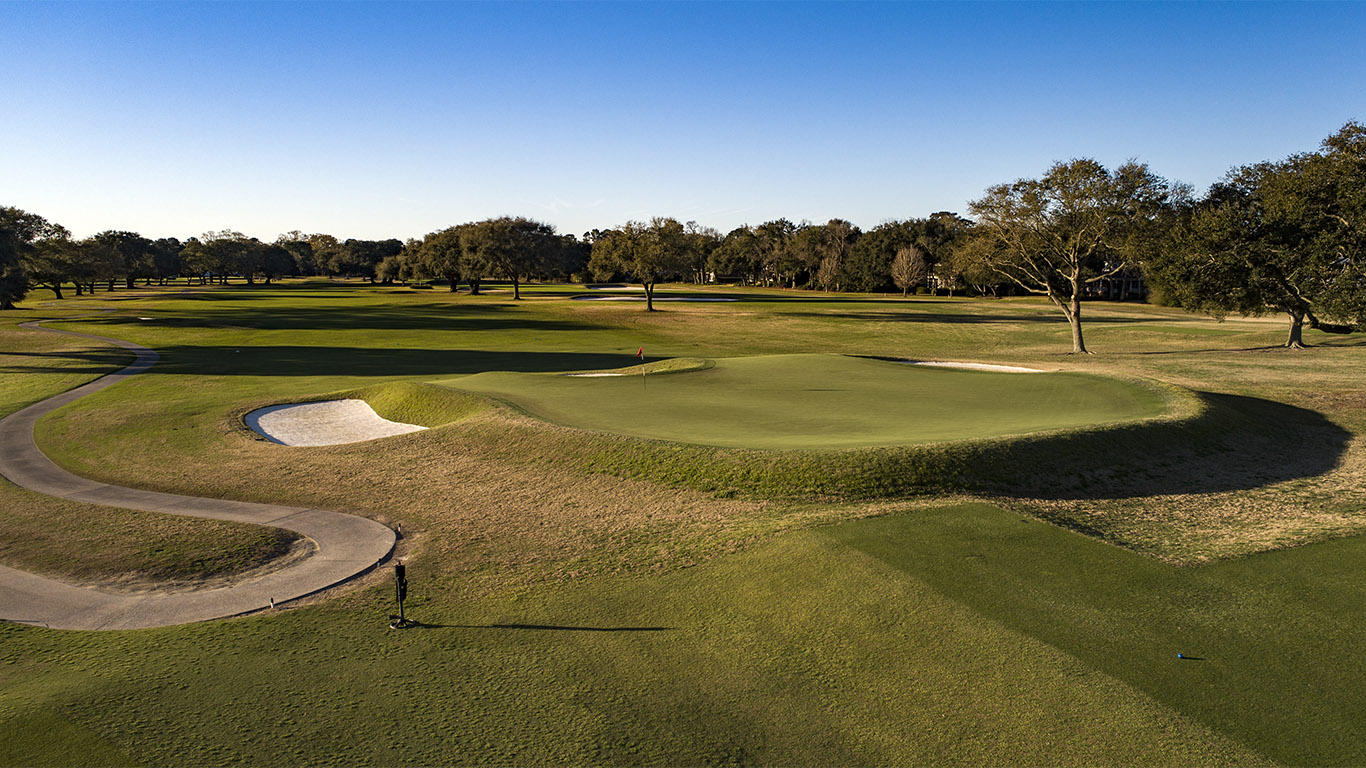
Behind the 16th green
-
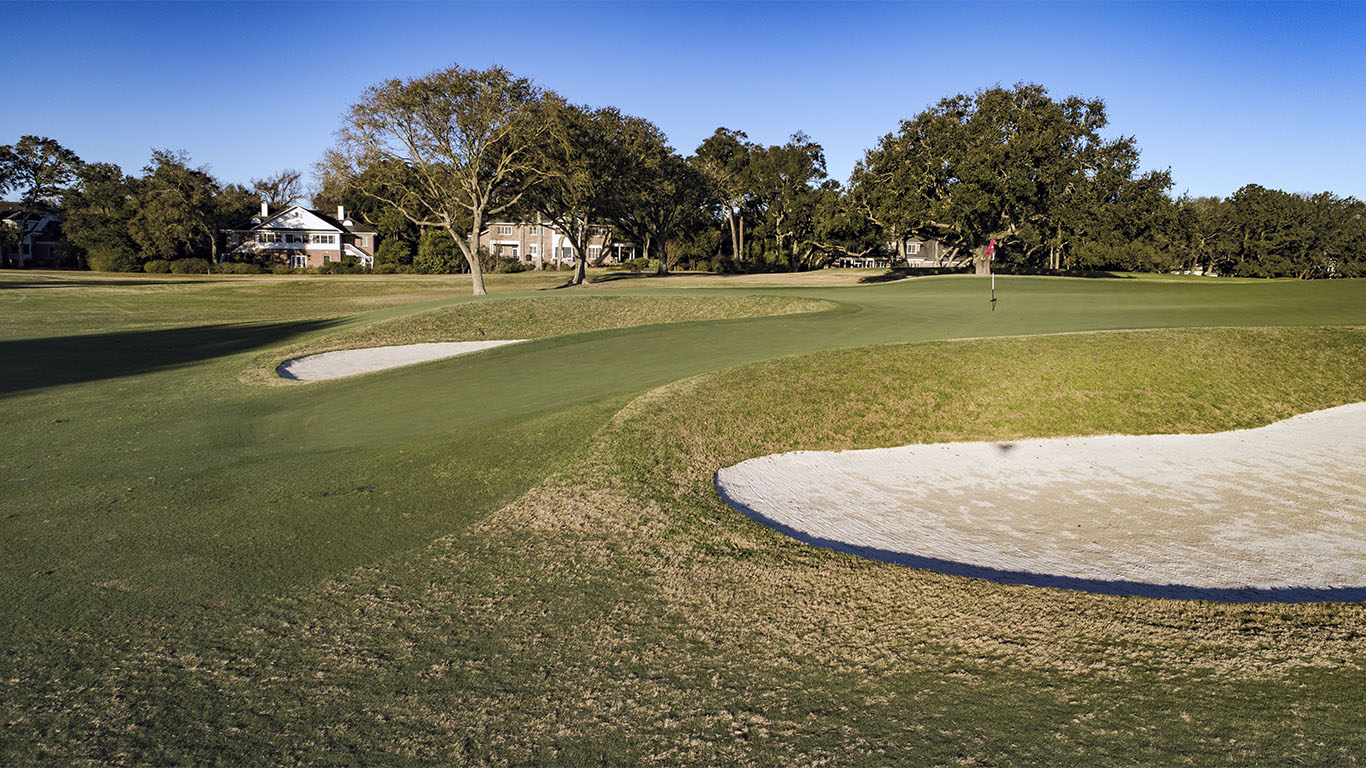
A look at the false front on the 16th green
-
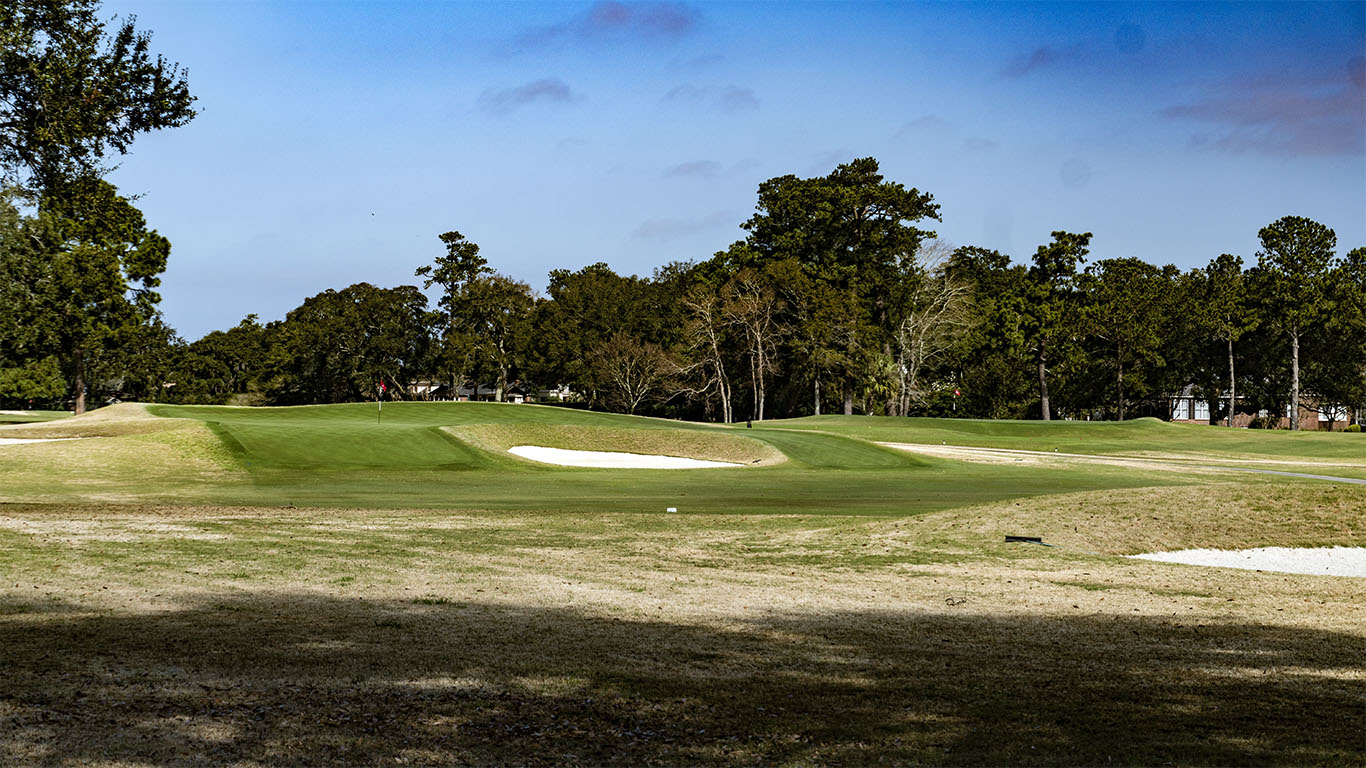
Left of the 16th the lions mouth looms
-
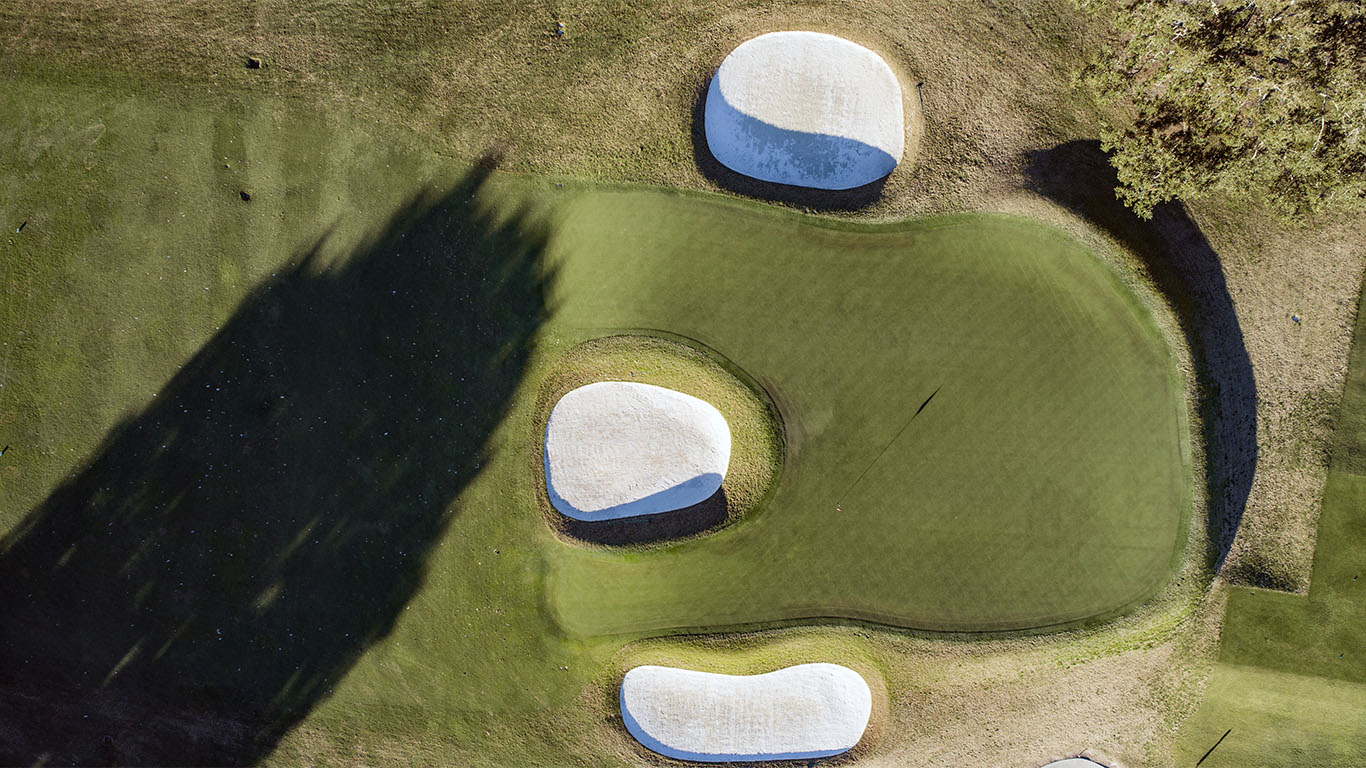
Overhead the 16th
-
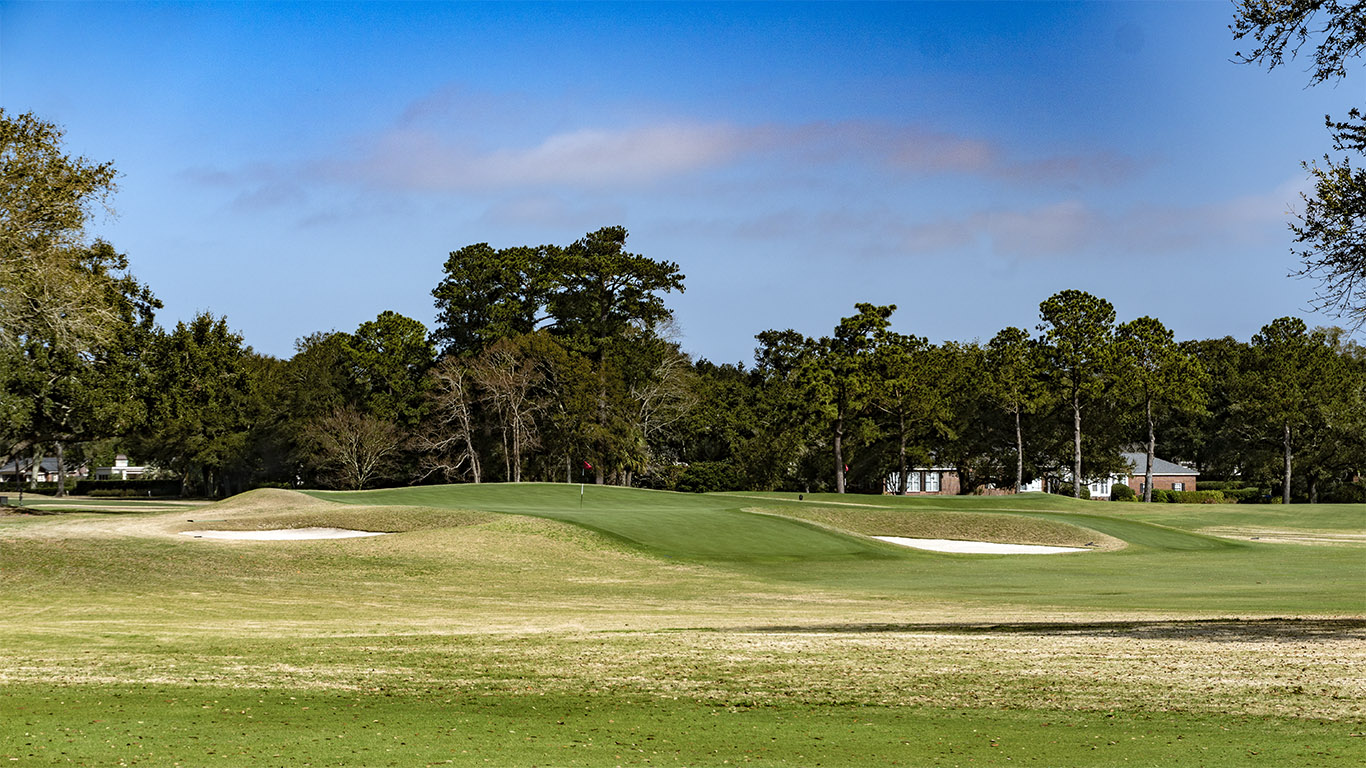
-
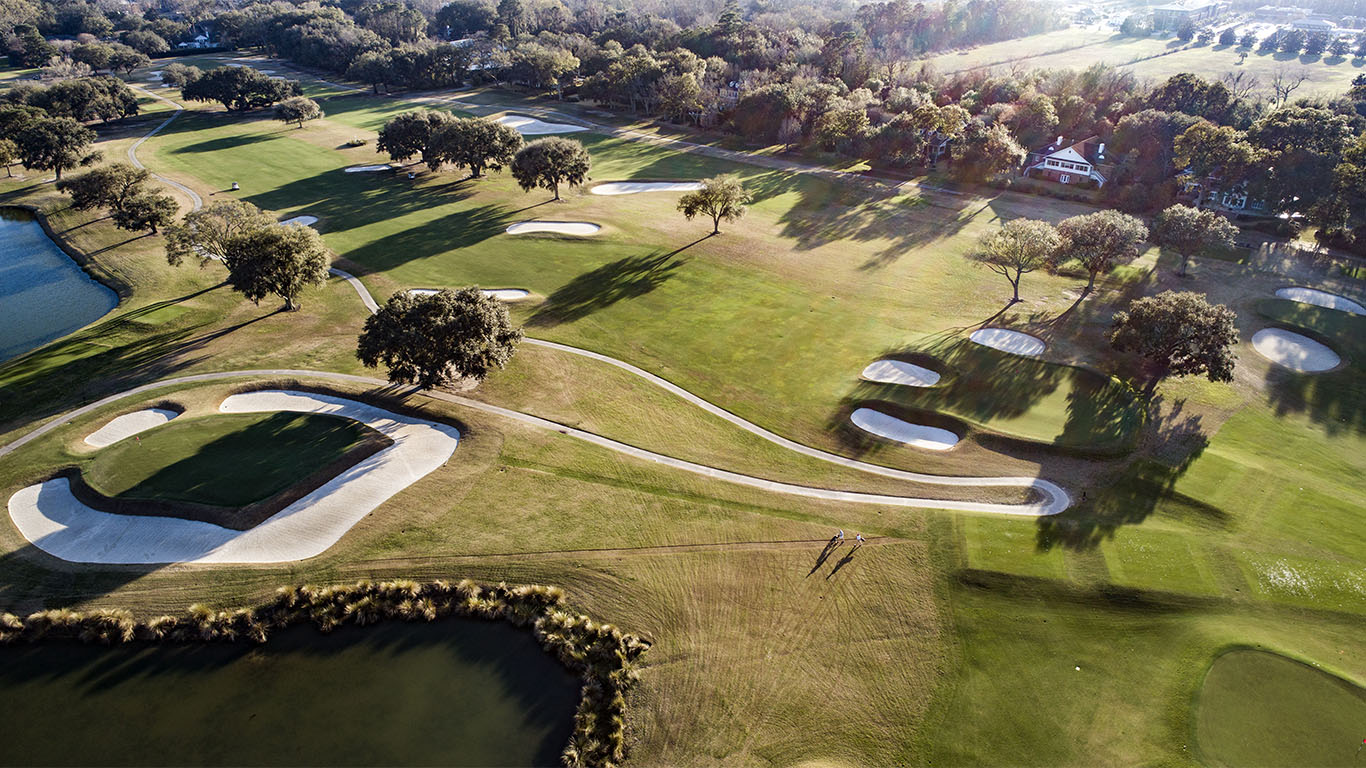
High above the 16th and 17th
-
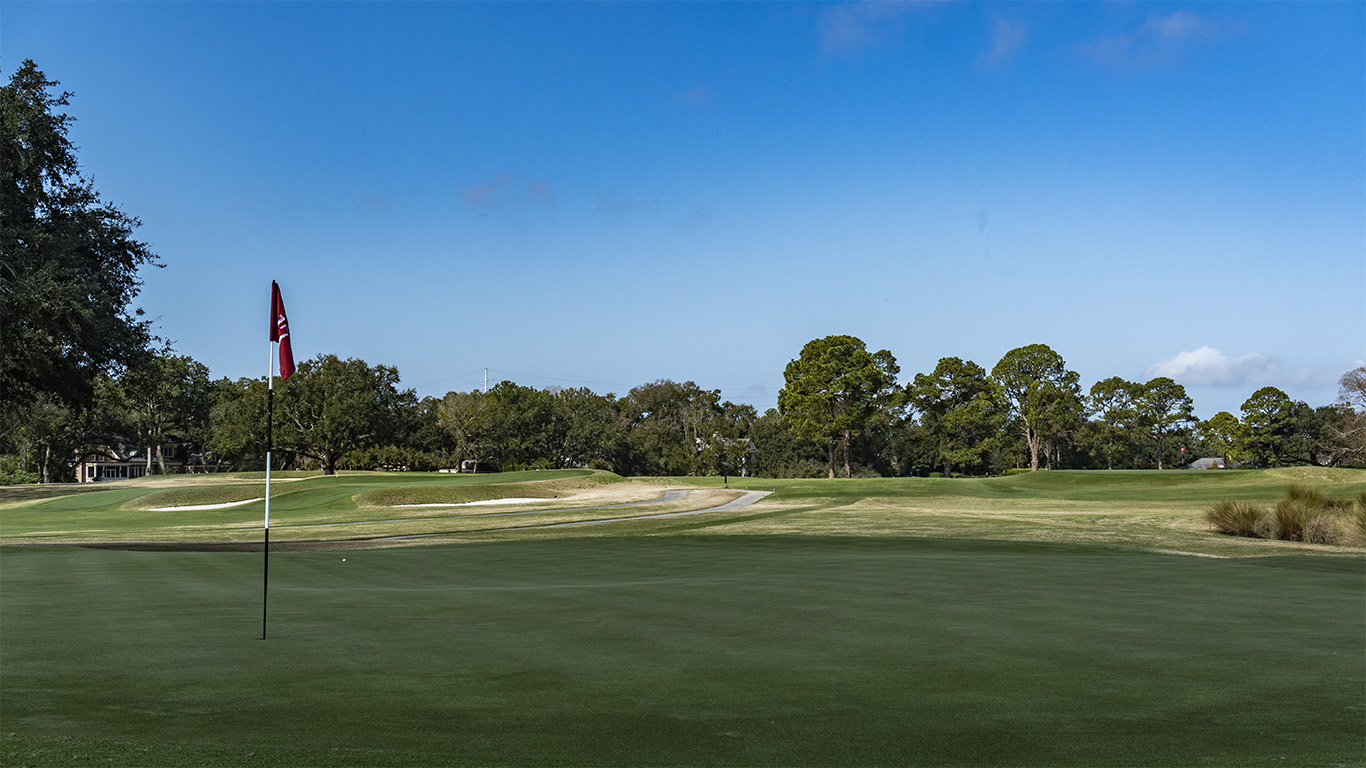
Looking at the 17th from the 16th green
Concluding the holes along the ridge is the short par-3 17th. The hole’s recently restored bunkering creates an island-like green. While a mere 160 yards, the 17th is hardly easy. The green complex features a thumbprint design in its center. The depression wreaks havoc on each pin position. Great shots will yield easy birdies but a slight miss to the left or right of any pin will lead to a difficult two putt or up-and-down from the sand.
-
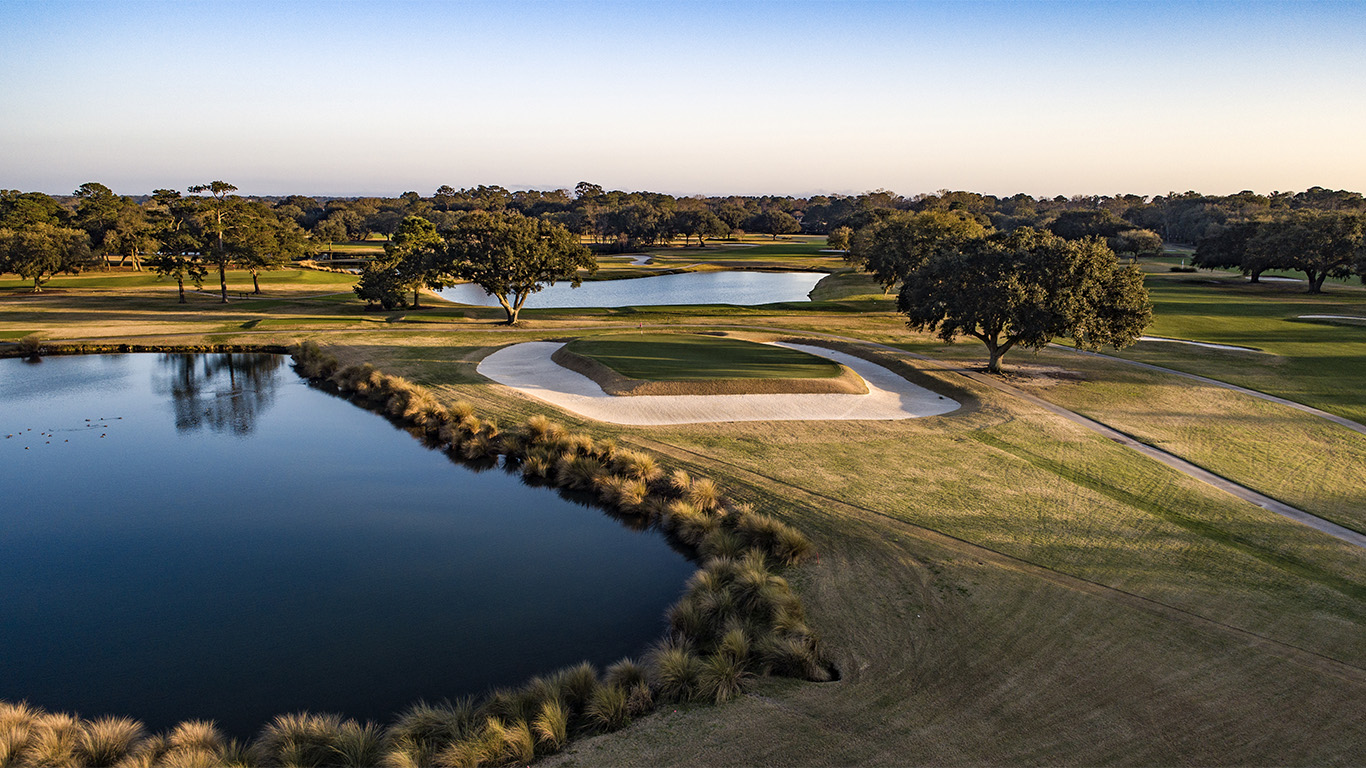
The short par 3 17th
-

Overhead the recently restored 14th
-
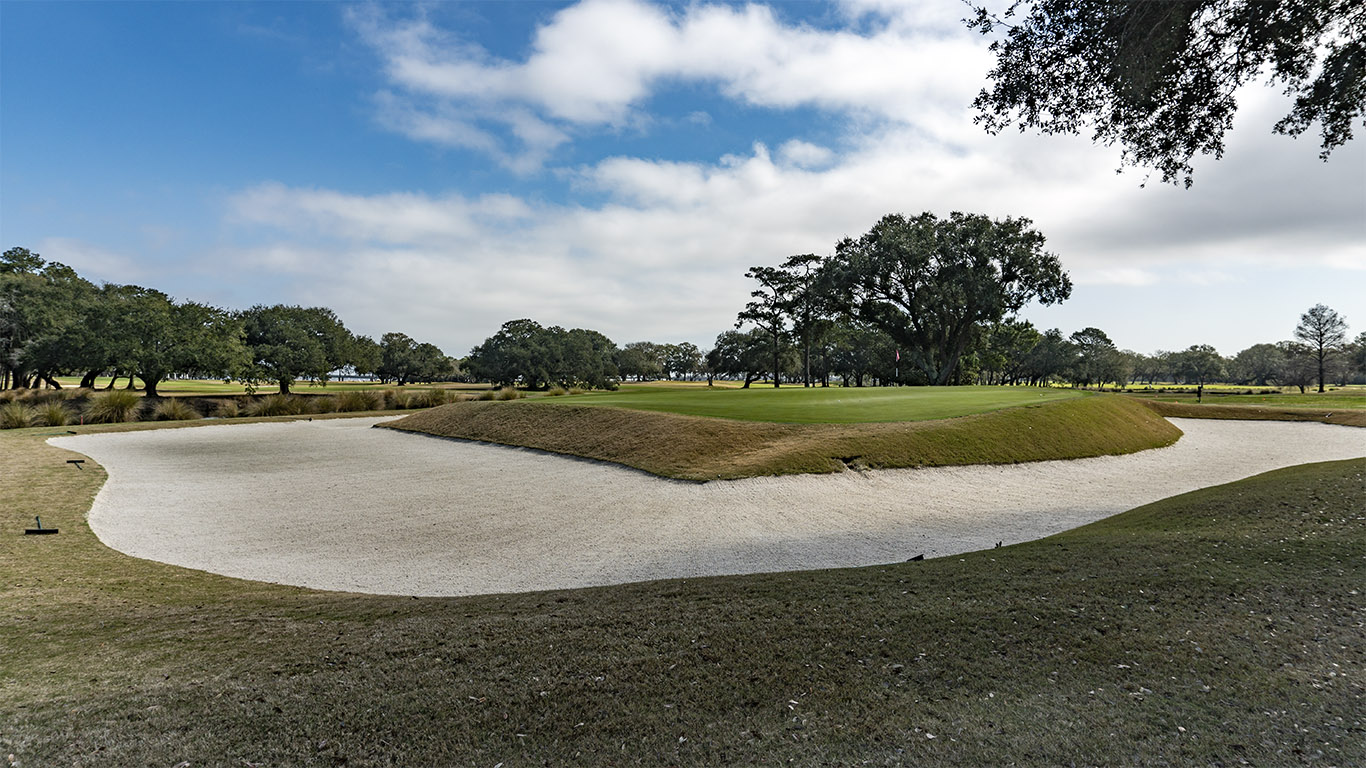
The thumbprint creates difficult pins throughout the green.
-
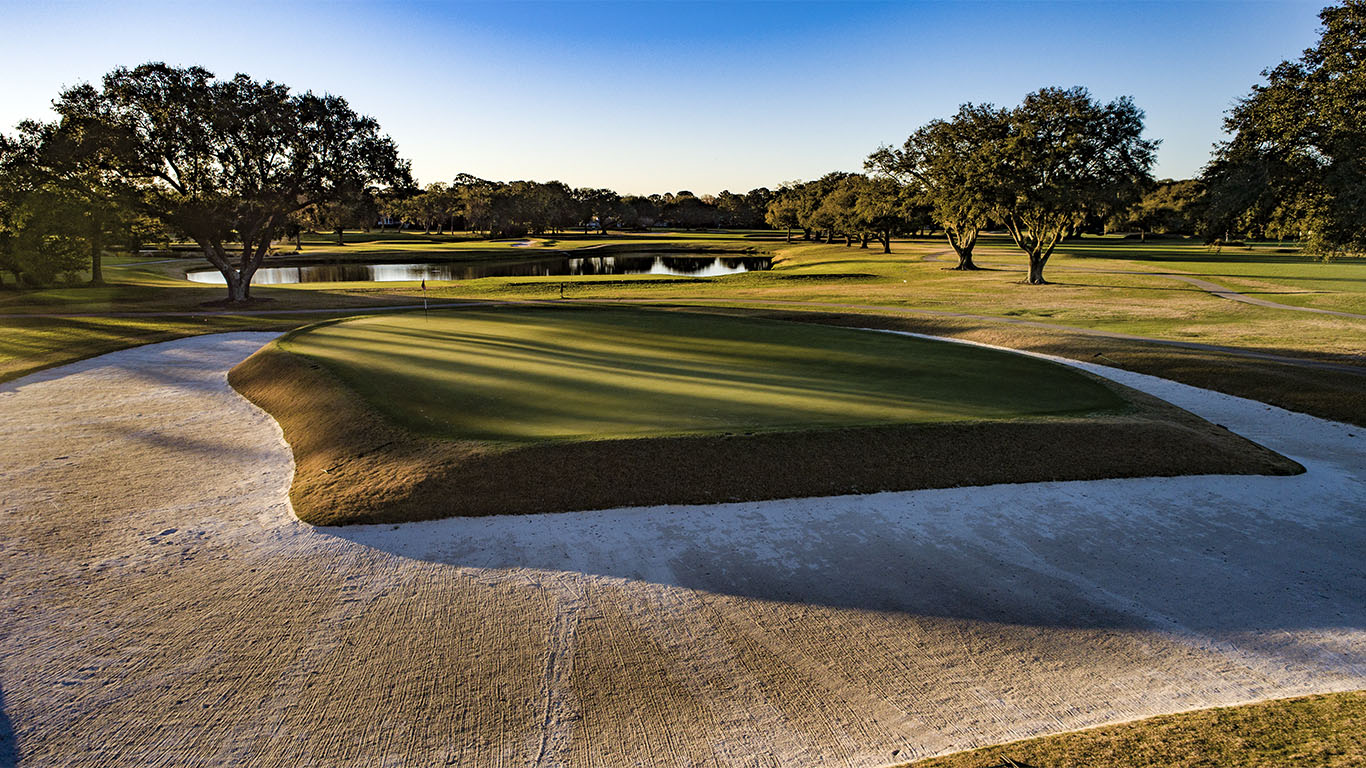
The 17th green at sunrise
The Country Club of Charleston comes to a close with the long par-4 18th, which climbs up the ridge towards the clubhouse. A prominent cross bunker juts into the landing area from the left off the tee. Players will have long-iron or even fairway-wood approaches into the subtlly brilliant green. This massive green features a dramatic false front and spines on the right and left sides which create a front and back portion. The length of the hole and the green complex will make holding onto a score a difficult task.
-
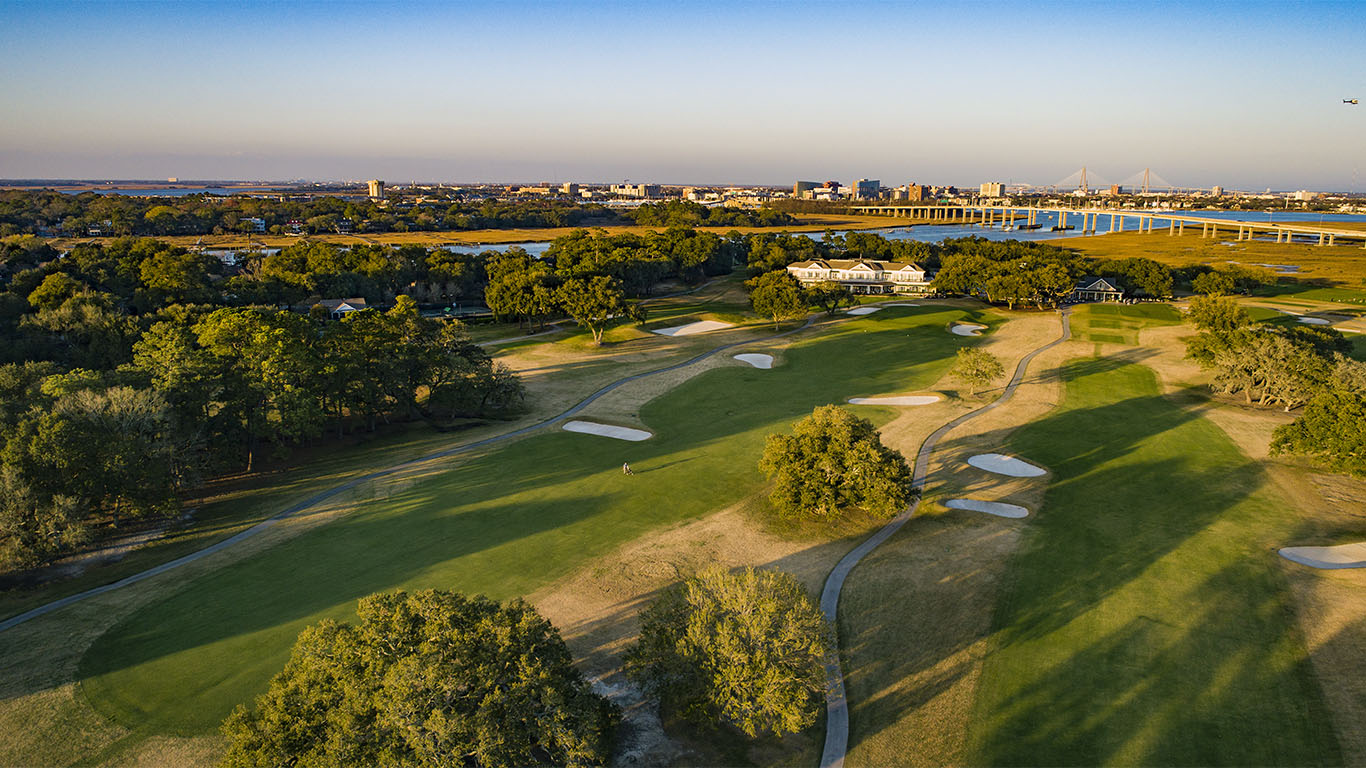
The long par 4 18th at sundown
-
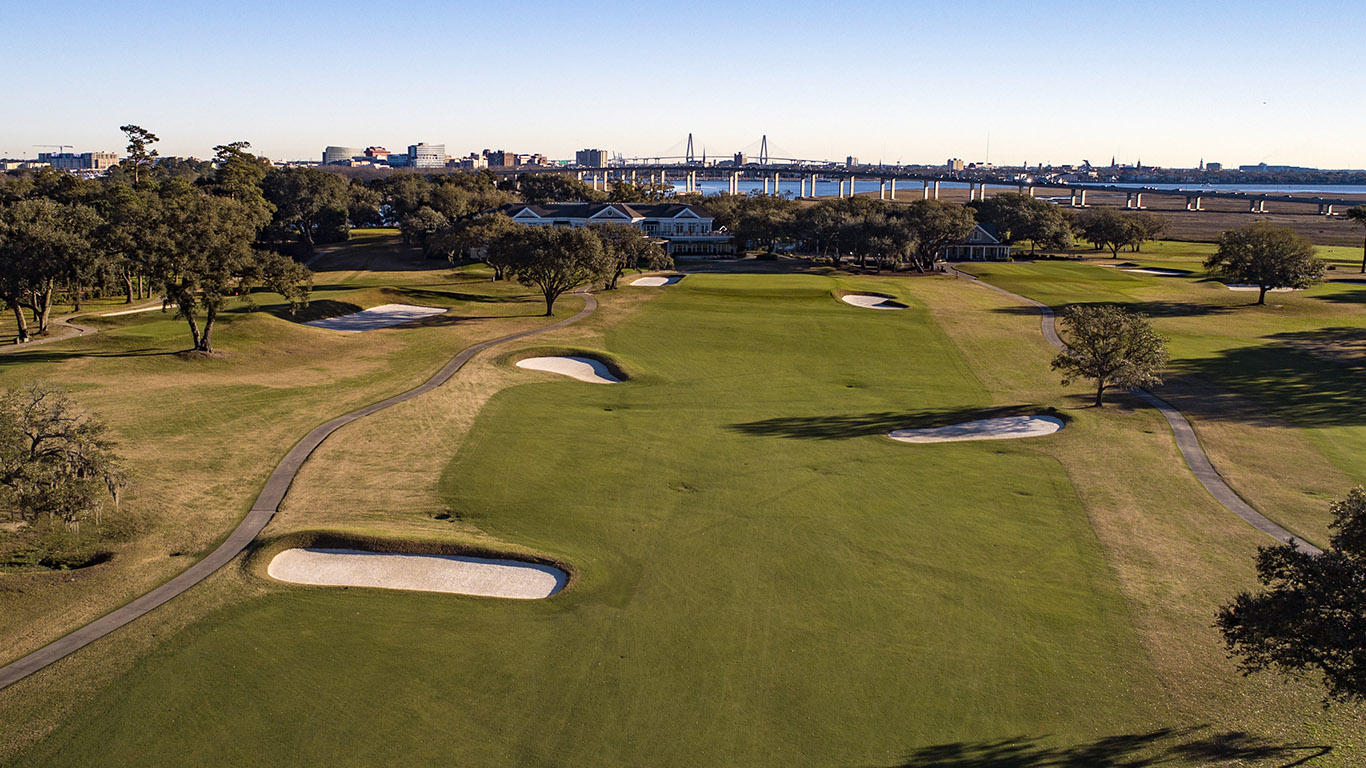
The 18th's cross bunkers
-
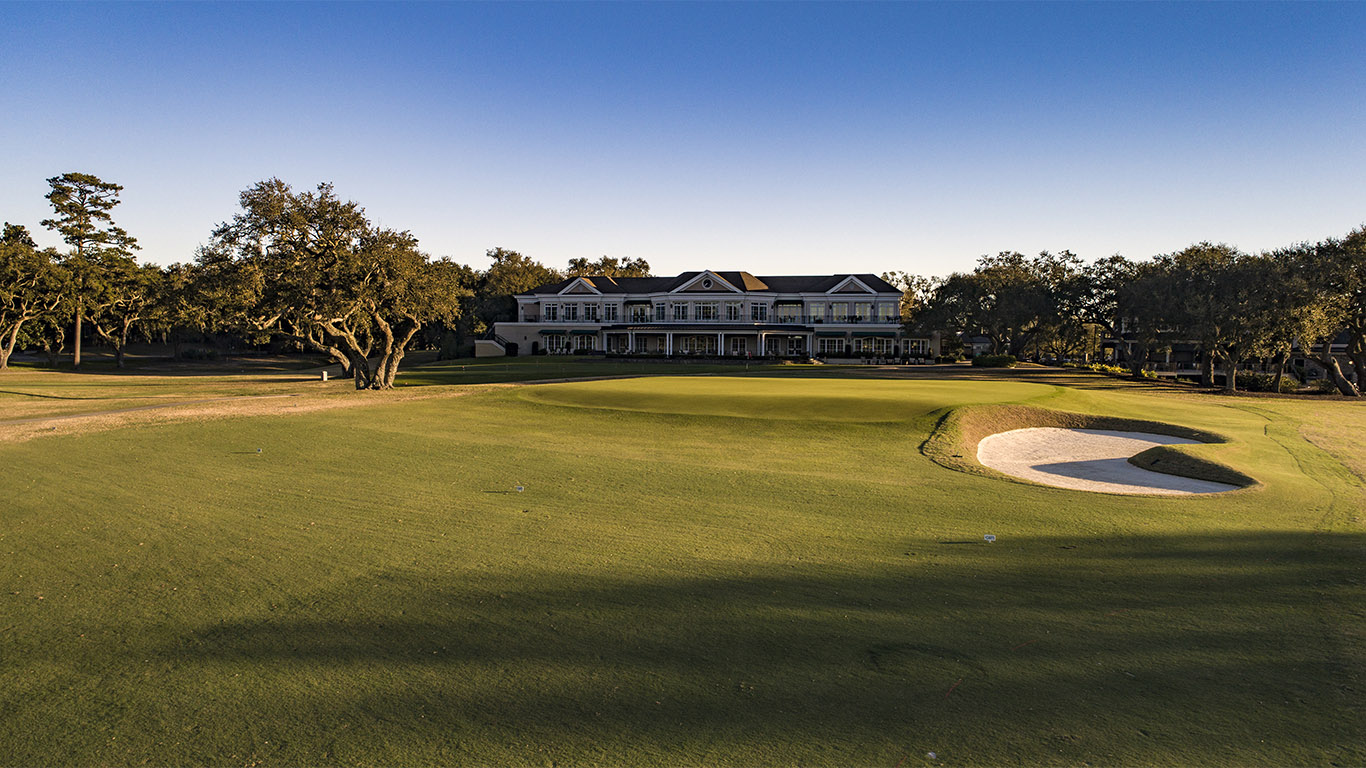
The false front and green complex on the 18th
Not to be overlooked
The front nine contrasts the drama filled back nine wonderfully, sprawling out into the scenic marshland portion of the course. But the front nine isn’t just pretty; it has some of the course’s most strategic holes.
The Leven hole 4th will confound some players but reward others who are able to challenge the devastating left bunker. Those that do will see a green that opens up with access to each of the flags. Those who play away from the left bunker, on the other hand, will face a difficult angle and an obscured look at the green
-
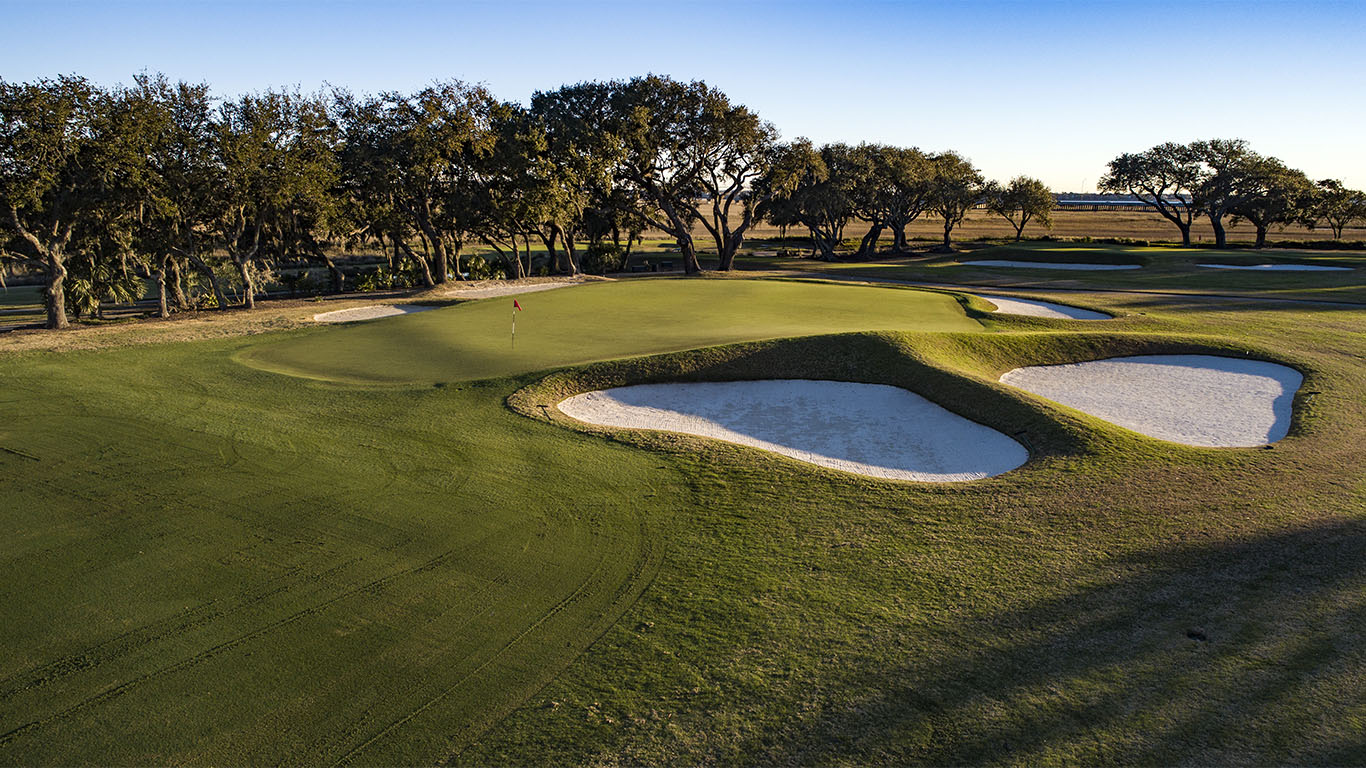
Right of the 4th green
-
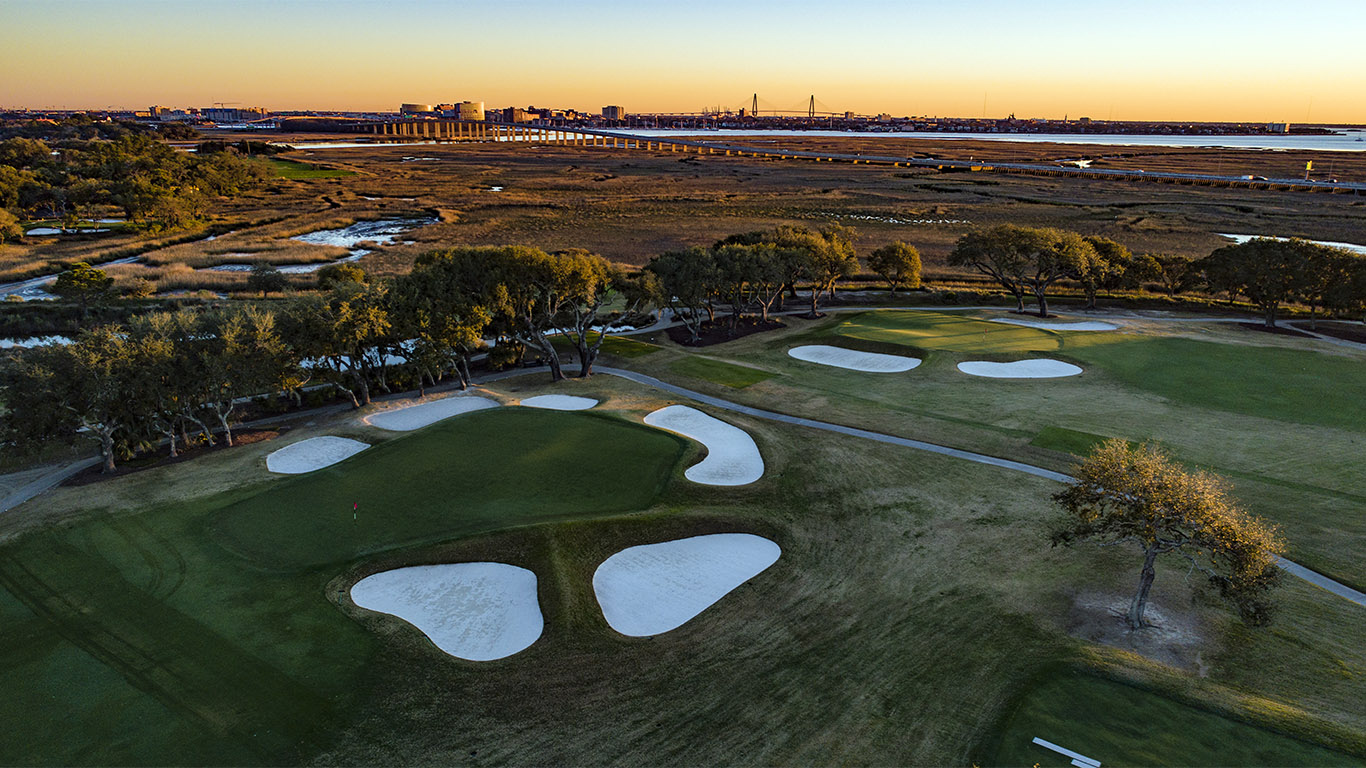
The 4th and 7th greens at CC of Charleston
-
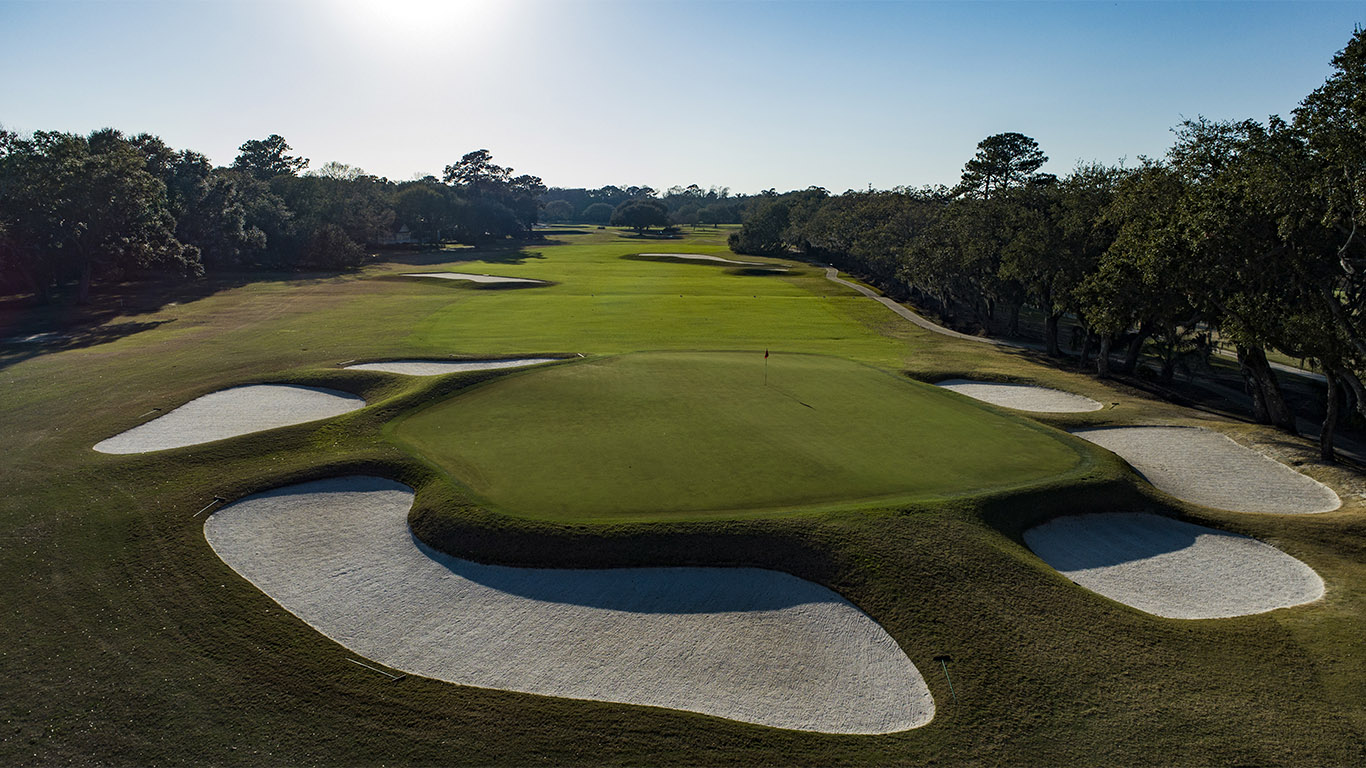
Behind the 4th green
-
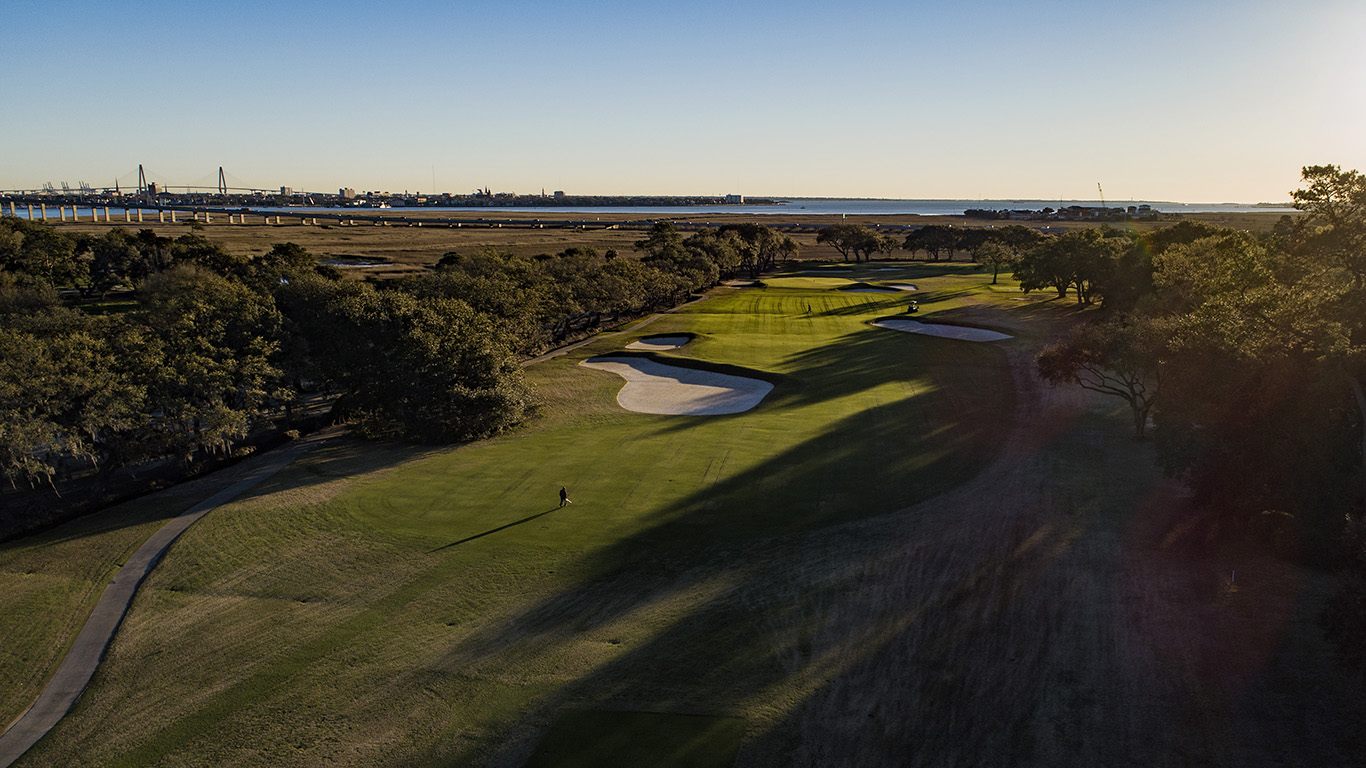
Above the 4th hole reveals the strategy, carry left or play safe right
-
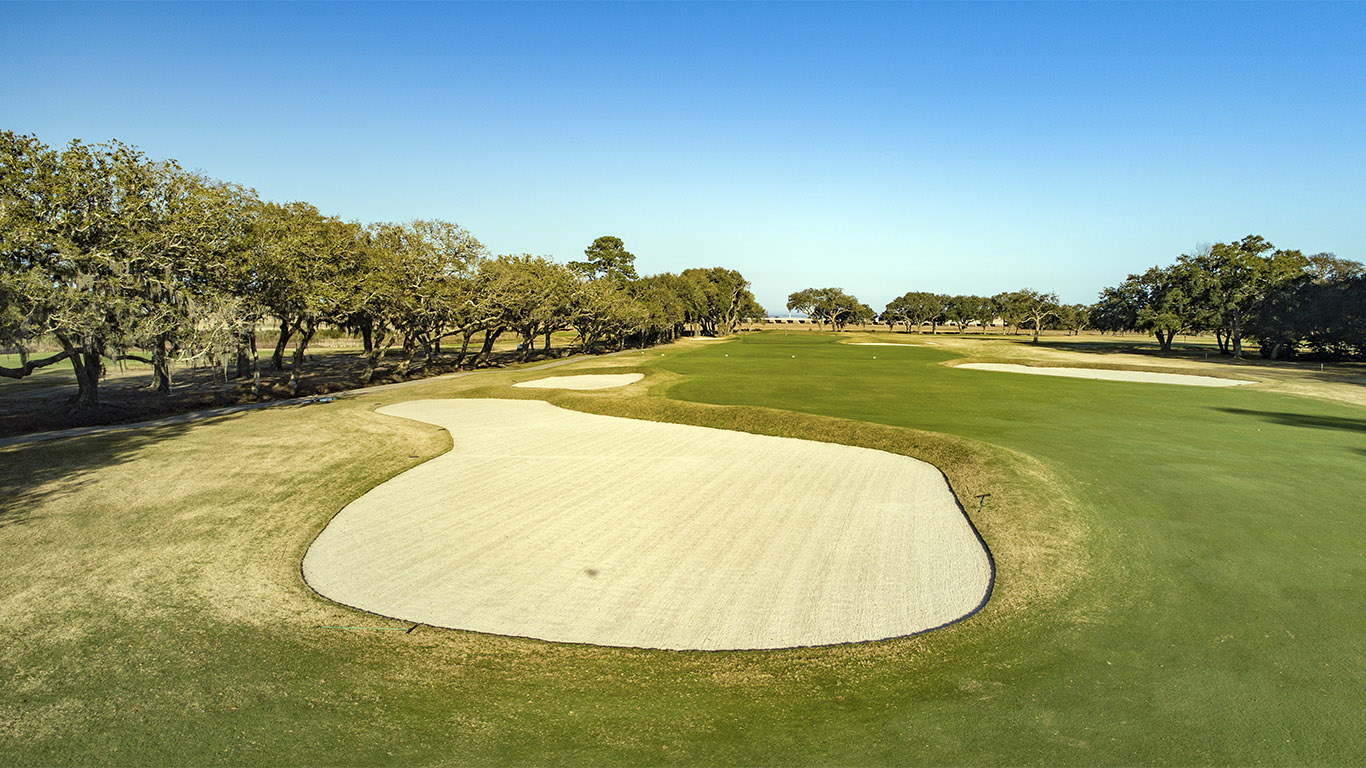
The left carry opens up the green complex.
-
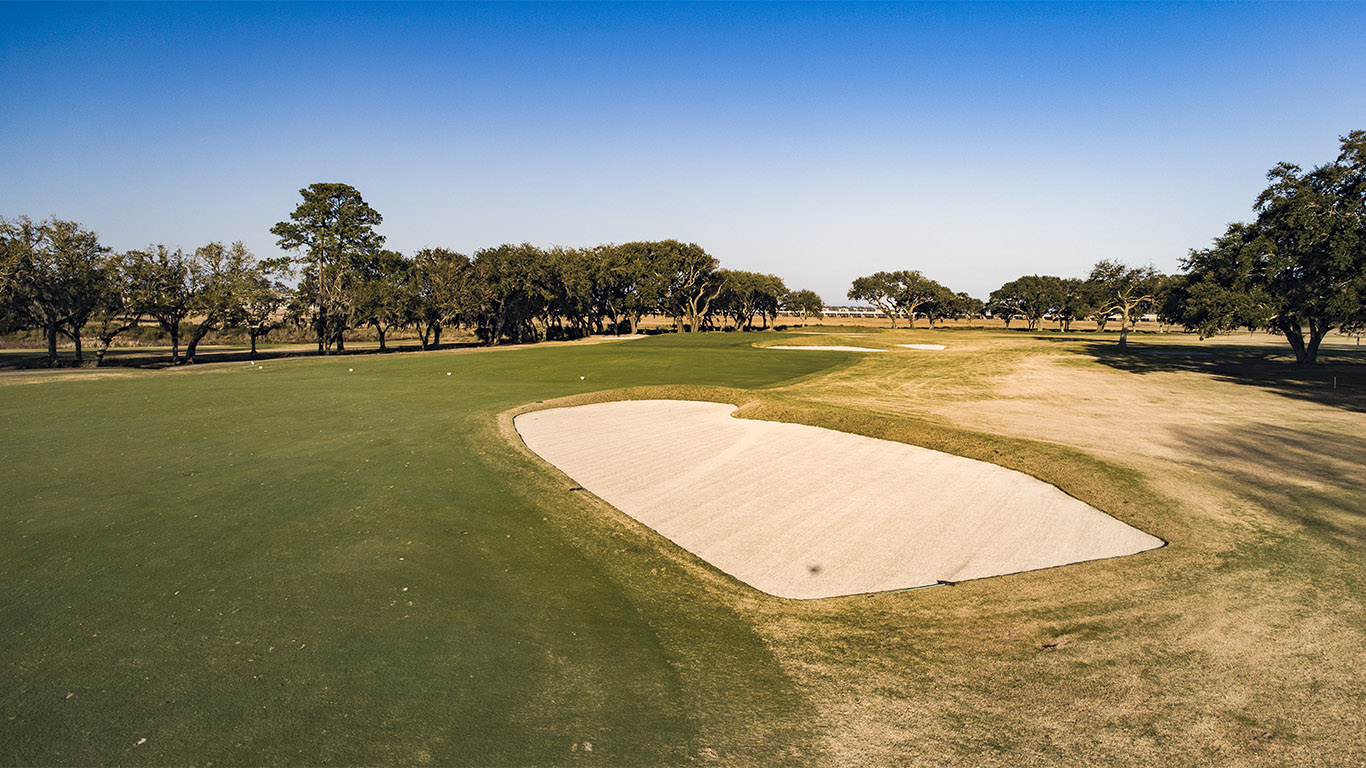
The safe play right leaves a poor and partially obscured angle
Playing along the river, the short par-4 7th’s maiden green complex will provide ample theatre. The distinct green possesses two small plateaus, which will reward the brave and precise with birdie opportunities.
-
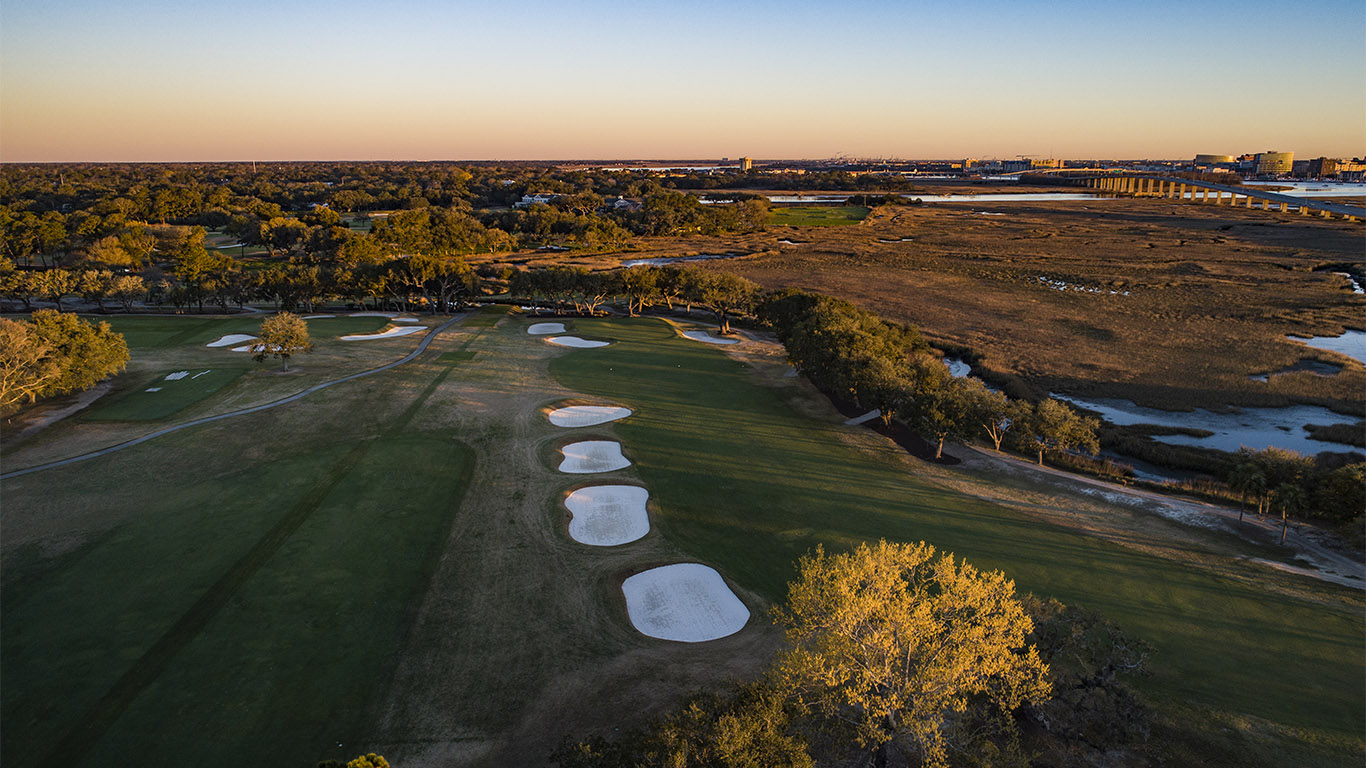
Above the short par 4 7th
-
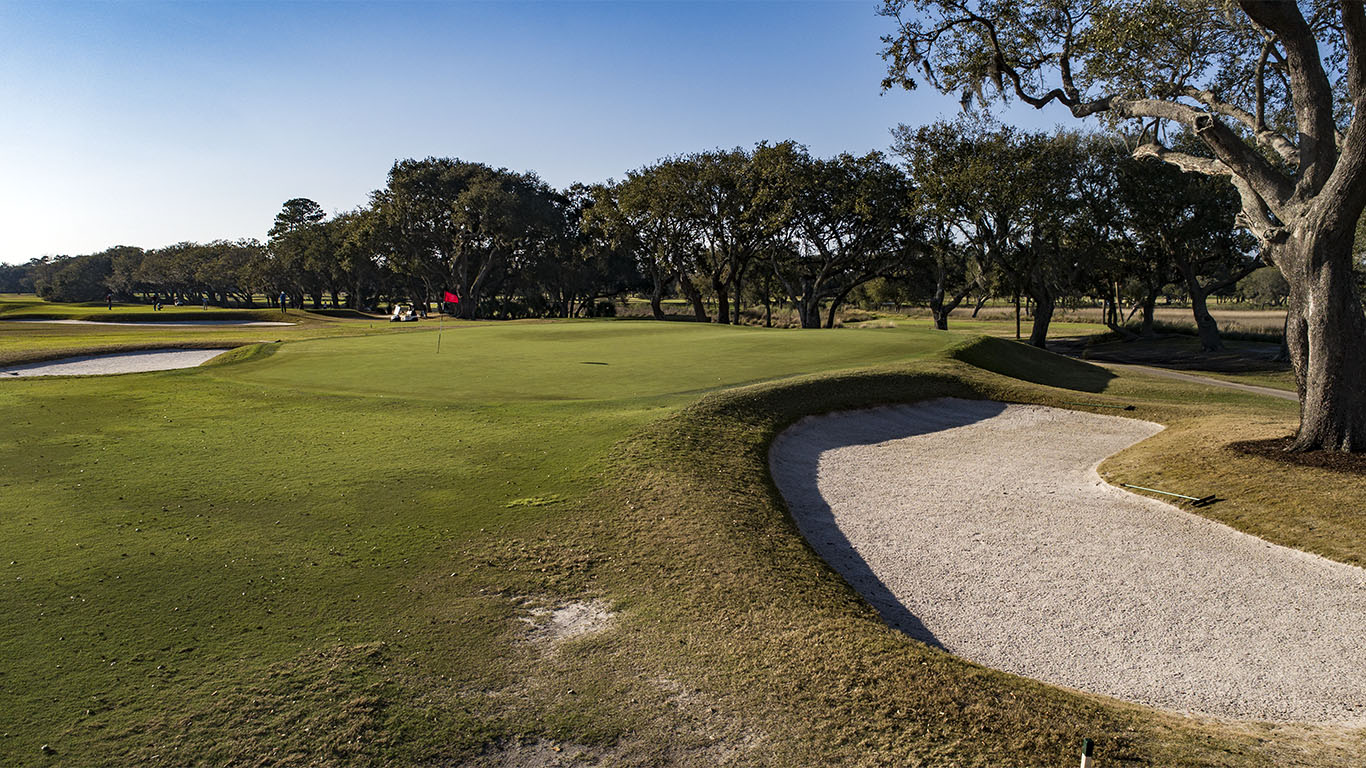
The maiden green with its two distinct plateaus
-
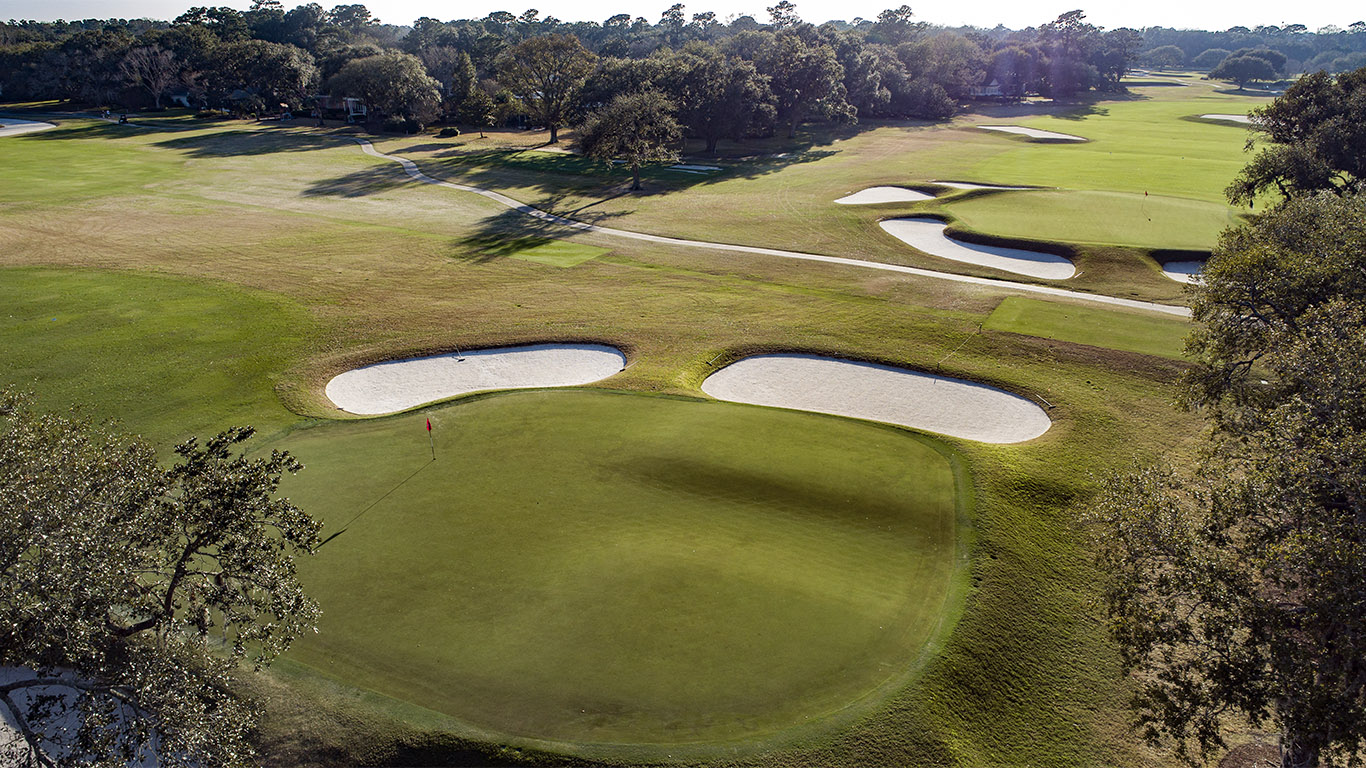
A close up of the back portions of the 7th green
-
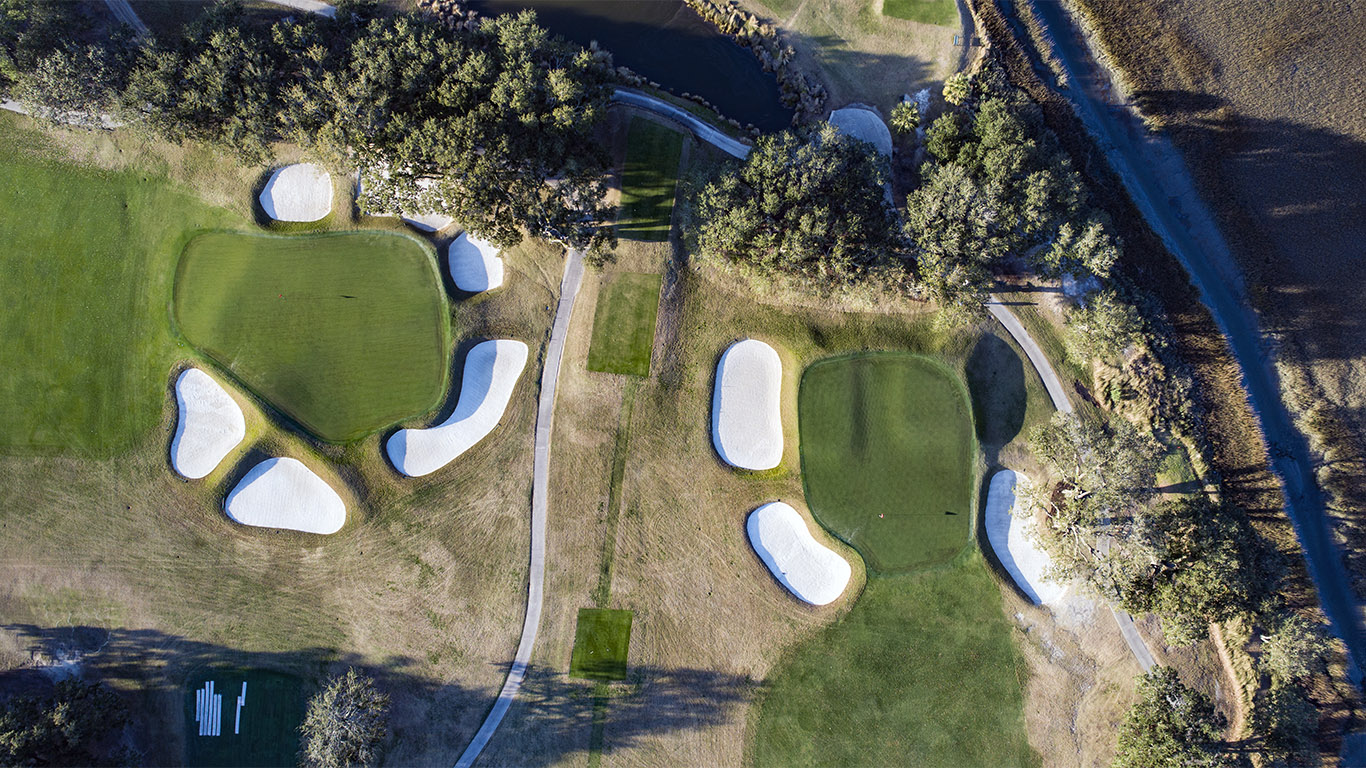
Overhead the 7th (right) and 4th (left) greens
-
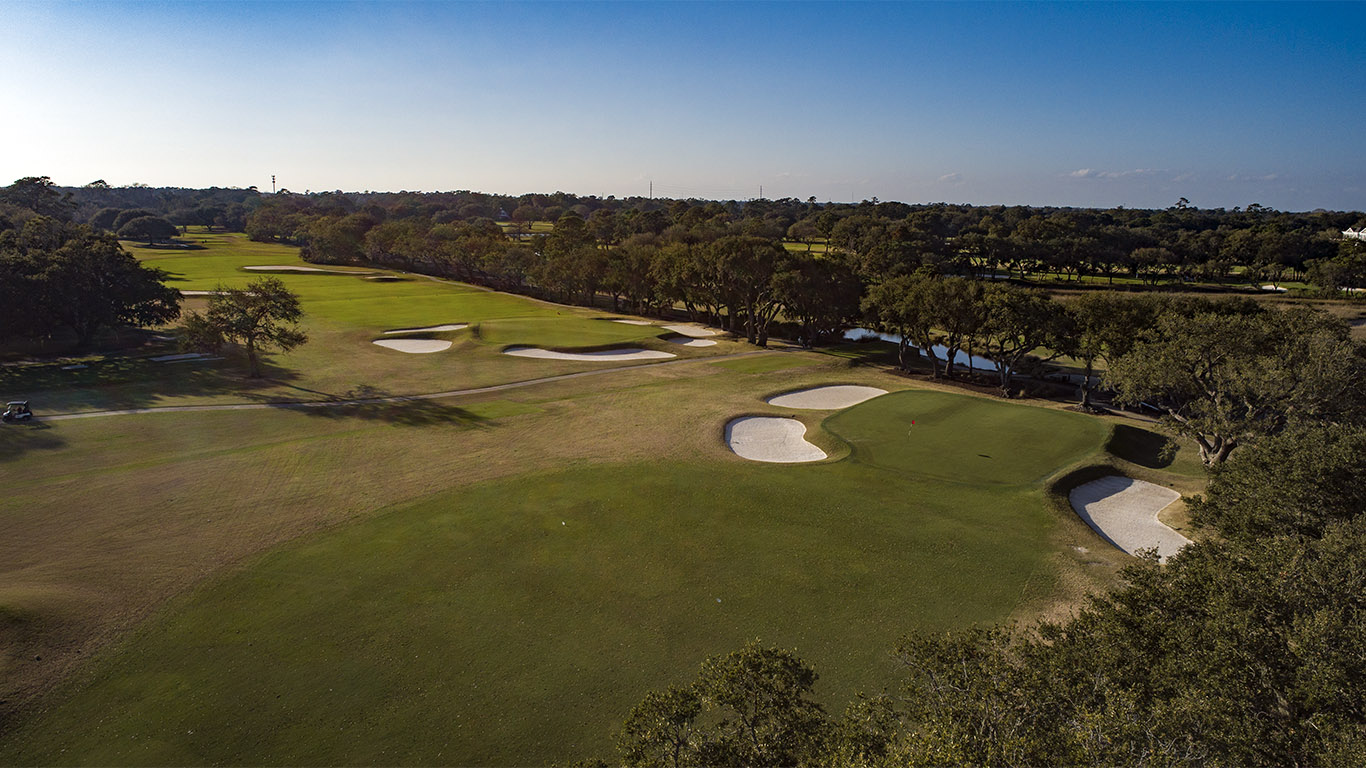
The 7th and 4th greens from right of the 7th
The Country Club of Charleston’s brilliance comes from its subtlety. Rather than striking big blows with obvious water hazards, Raynor’s design can inflict thousands of paper cuts. Birdies are there to be had, but players who get themselves into the wrong position will see bogeys pile up.
Similarly, it’s easy to fawn over Raynor’s bold exterior contours on the green complexes, but the less pronounced interior contours are what make them special. While the bold shoulders and kicker slopes are efficient at separating good shots from poor shots, the internal spines and knobs are what separate good from great shots. These greens, especially with firm conditions and Charleston’s typical breezy conditions, will allow the best players to separate themselves from the pack.
The event of the year
The female pros’ style of play and the classic architecture at the Country Club of Charleston make this year’s U.S. Women’s Open the most promising golf event on American soil. At a recent media day, defending champion Ariya Jutanugarn had a spot-on assessment of the Raynor design.
“It’s so tough,” she said, “especially on the greens. The tee shot is not that tough. The fairways are pretty wide open. The greens are huge and you have different slopes. You have to be in the right place. I feel like it’s a very challenging course. The greens are going to be the key. You have to be putting well.”
While Jutanugarn’s power will yield certain advantages, she will have to make the right decisions on where to push and which line to take. This championship won’t just be about executing shots. It will be about executing shots and making the right decision while playing under major championship pressure. It will be appointment viewing for all golf fans.
Sign Up for The Fried Egg Newsletter
The Fried Egg Newsletter is the best way to stay up to date on all things golf. Delivered every Monday, Wednesday, and Friday for free!


 by
by 
